
Selecting Correct Undergarments
With the character, place, and time established, design of this ensemble comes down to choosing which different components and/or features will be most appropriate for the status, class, tastes, preferences, and availability of the depiction. Sarah Houx was located in rural Wyoming in a time where goods and services were available, but not on a steady basis.
She would also have had access to current information about fashion, and possibly even patterns. She definitely would have ordered patterns, fabrics, and ready made undergarments, trims, and structures through catalogs. There were also department stores in cities to the south and west she might have had travelers pick up for her or have mailed via postal or sent on the train.
Bustle
The bustle would have had to be ordered, or brought with her from the 1870’s and modified to the current style. As 1884 was technically between bustle styles, no bustle would be appropriate to the character. It is more likely, however, needing to be her husband’s political and social representative, she would have abandoned her high style early “lobster tail” bustle of the end of the ’70’s, and ordered from a catalog the new, larger, hoop style.
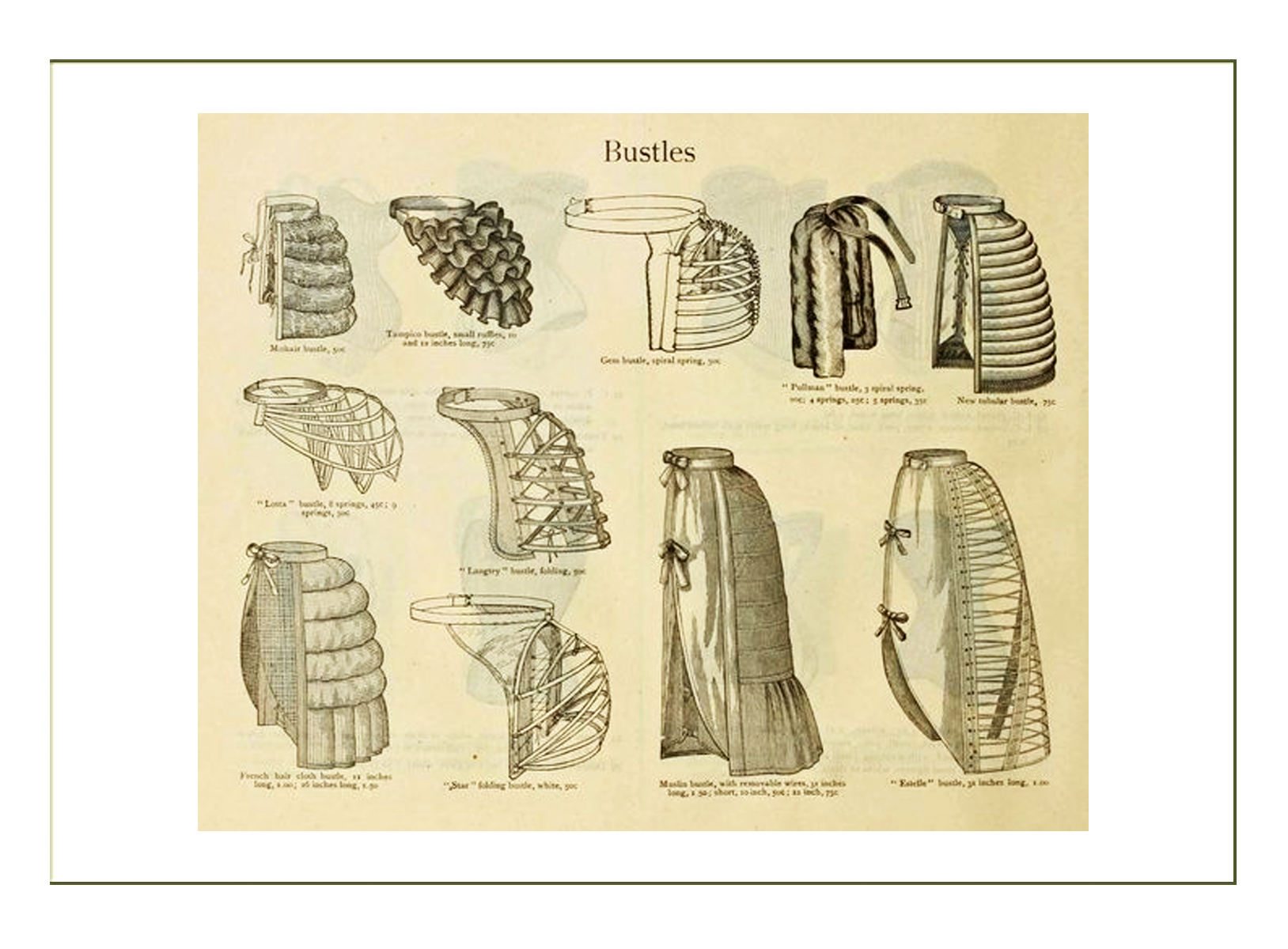
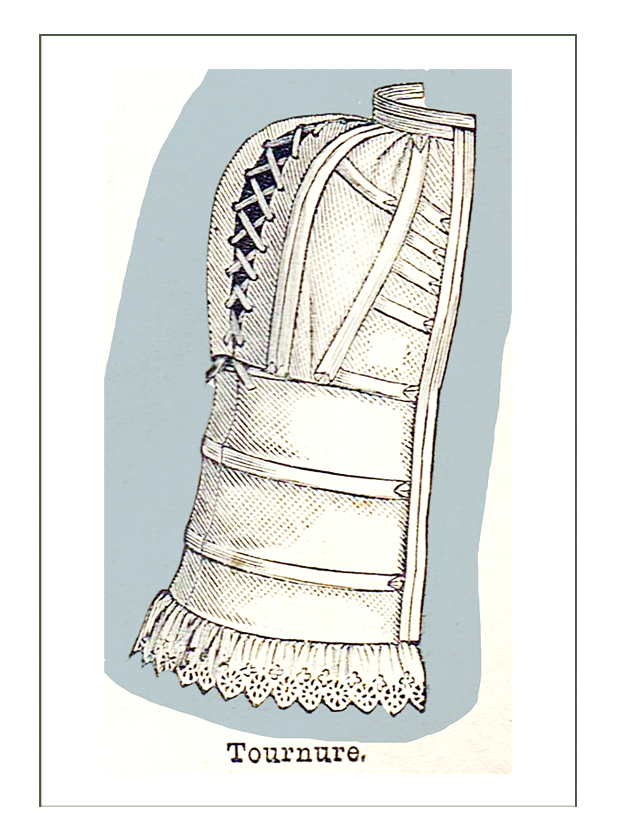
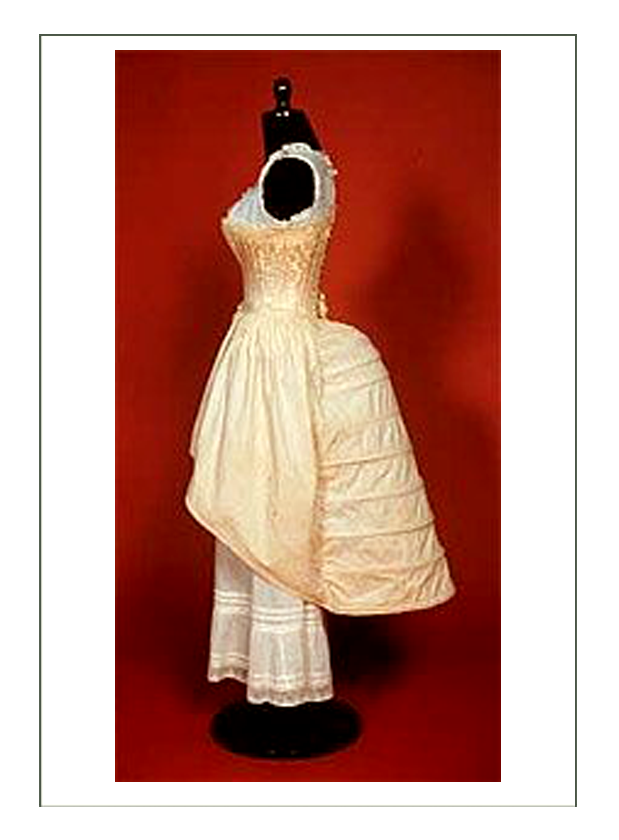
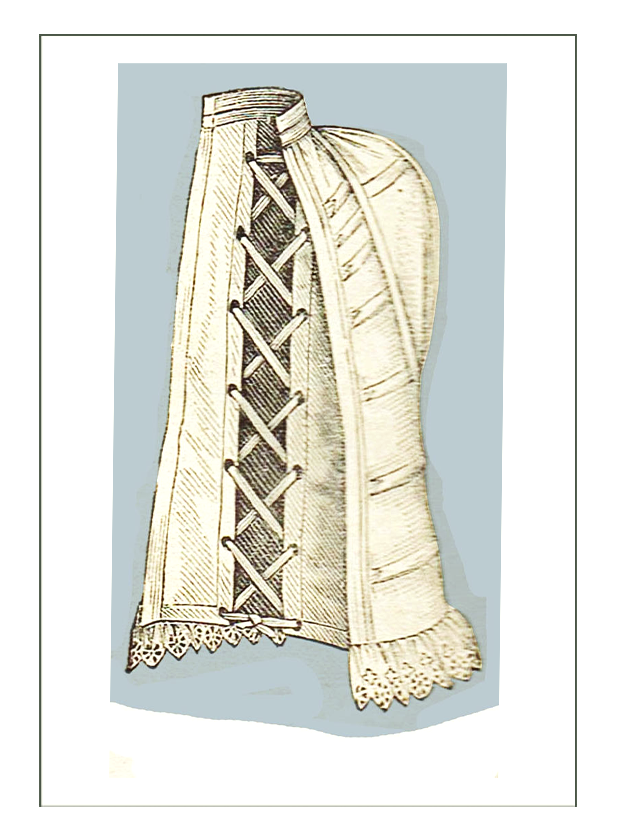
It is likely she would have chose the most popular and new style; mass produced. This was a metal boned (hooped) style at the top, with a petticoat built in front and bottom so a petticoat did not need to be worn over it. Removeable ruffles could be taped over the bones to create a full petticoat. This is most likely what a society climber would wear to be the leader of fashion in a small town in the west:
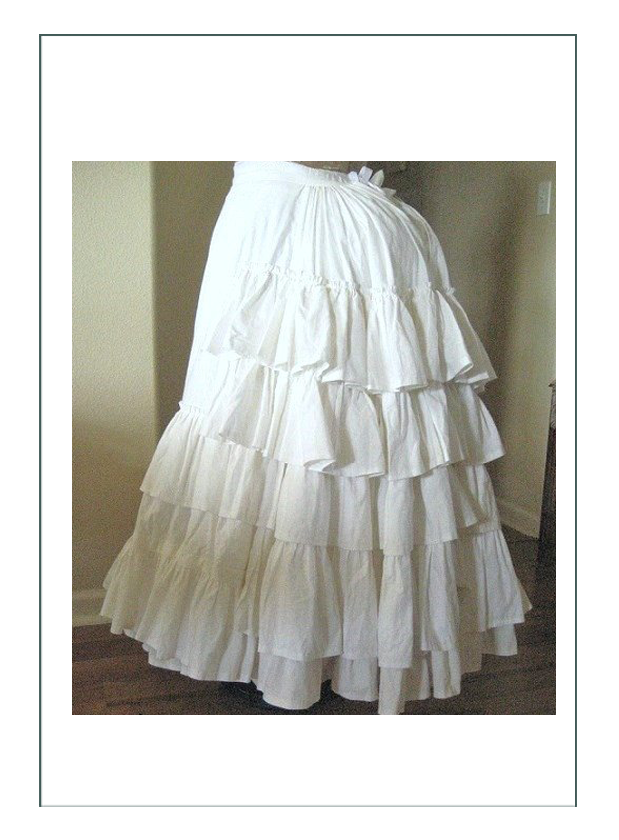
Petticoat
Any further petticoat would not be necessary, although there were many in different shapes available mass produced or custom made at the time. The various shapes and forms of these petticoats were designed to go over different wired bustle styles to keep the fabric away from the legs, and to hold the dress fabric out. The selection depended on the weight of the outer fabric – a silk did not require much understructure as would velvet or wool. Because Jacinta will be wearing just one ensemble and we know the fabrics are heavy, she would not have an additional petticoat to add more weight over the bustle, but would use the lighter form above.
None of these petticoats would be necessary, although in reality, Sarah Houx would have a much draped and overlaid one for casual and home wear when she wasn’t wearing a full bustle but perhaps a bustle pad. We do know they would never be caught in public without one or the other or both a bustle and petticoat to pull the rear out. At the very least, she would have multitudes of fabric draping over her high rear end. These were more related to the late 1870’s styles that Jacinta’s character would have worn and used for her daily wear since they would have been out of style in the early 1880’s.
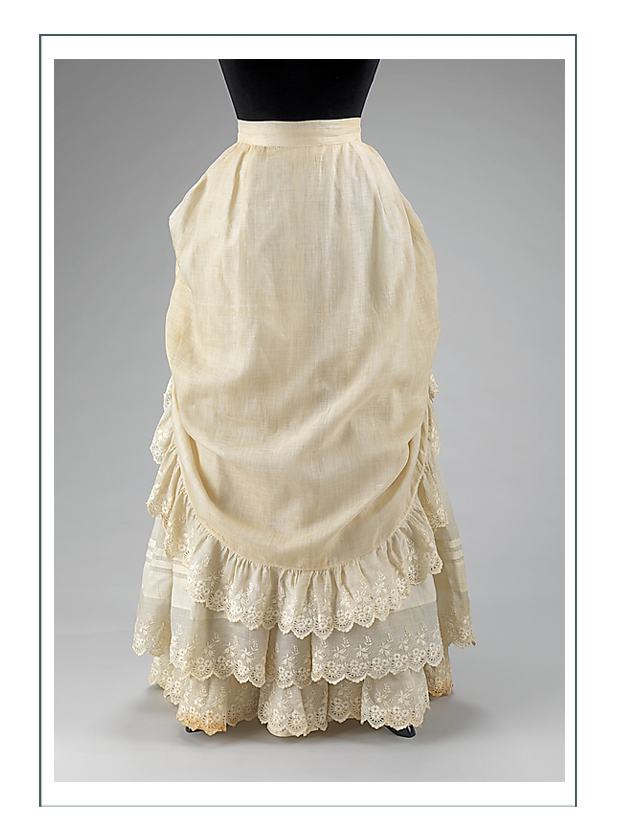
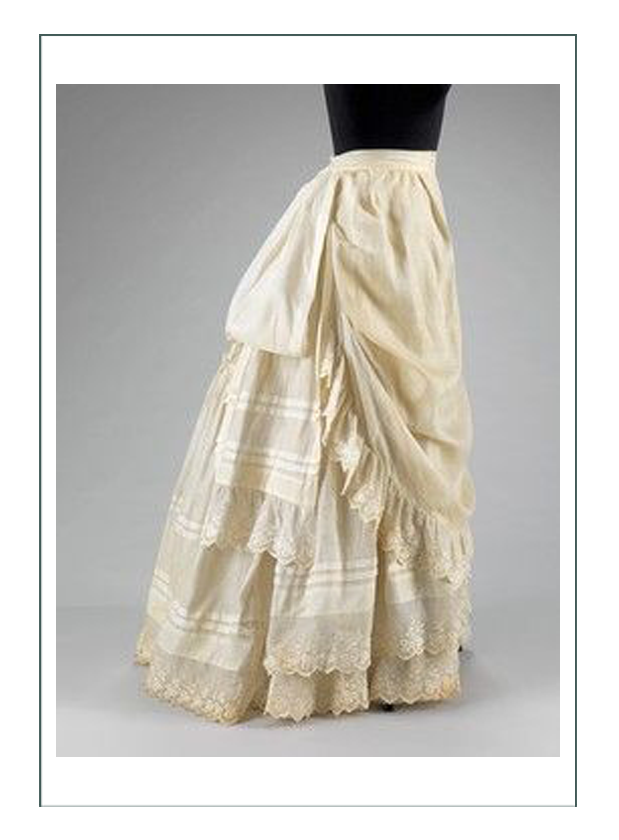
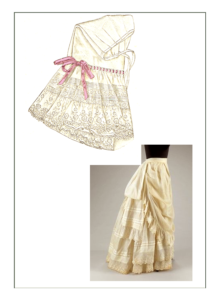

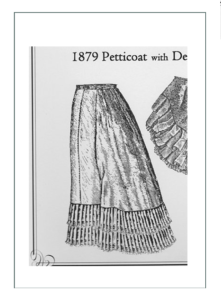
Corset
There is no question about the corset style, shape, and purpose. It would be a long, waist cinching, smoothing over the hips, and bust enhancing corset typical of the 1880’s. The end of the 1870’s had a constricting short corset, but for the same reasons as above (being a social trend setter to promote her husband), she would order a new mass produced model from a catalog.
It would most likely be American made since an American company was tops in the world at the time. It would have been very long with a spoon busk to keep the front of the abdomen flat, the same as previous era. She would be comfortable with a very tight waist and fit having grown up in grommet corsets and with the style continuing to admire tiny waists.
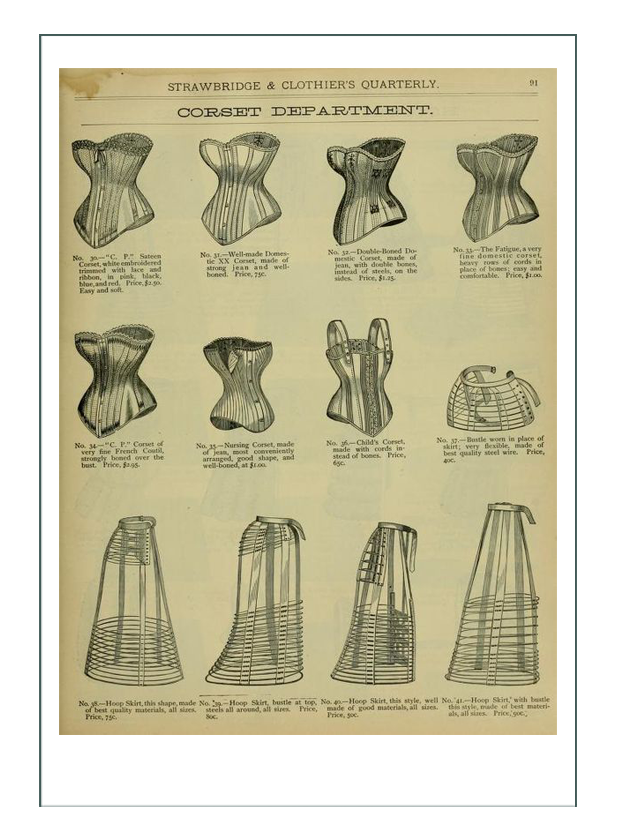
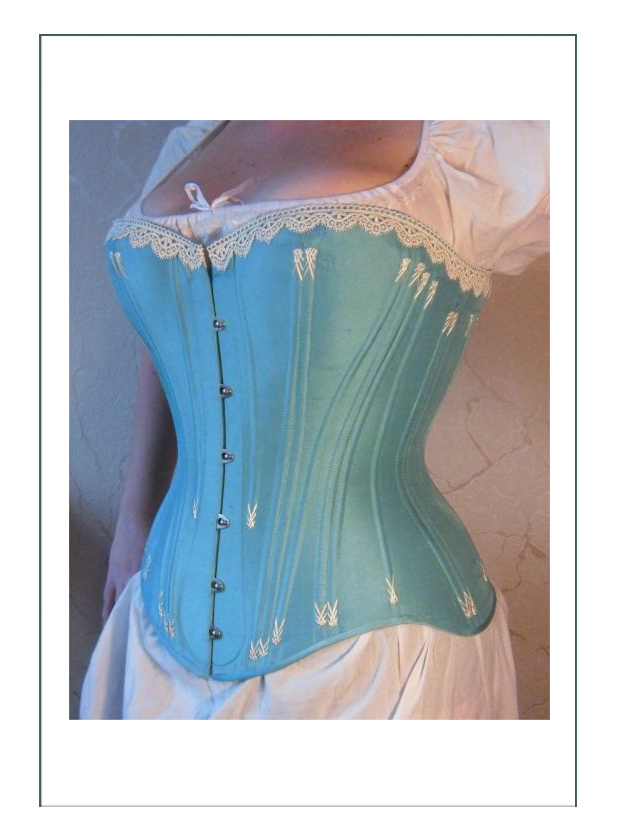
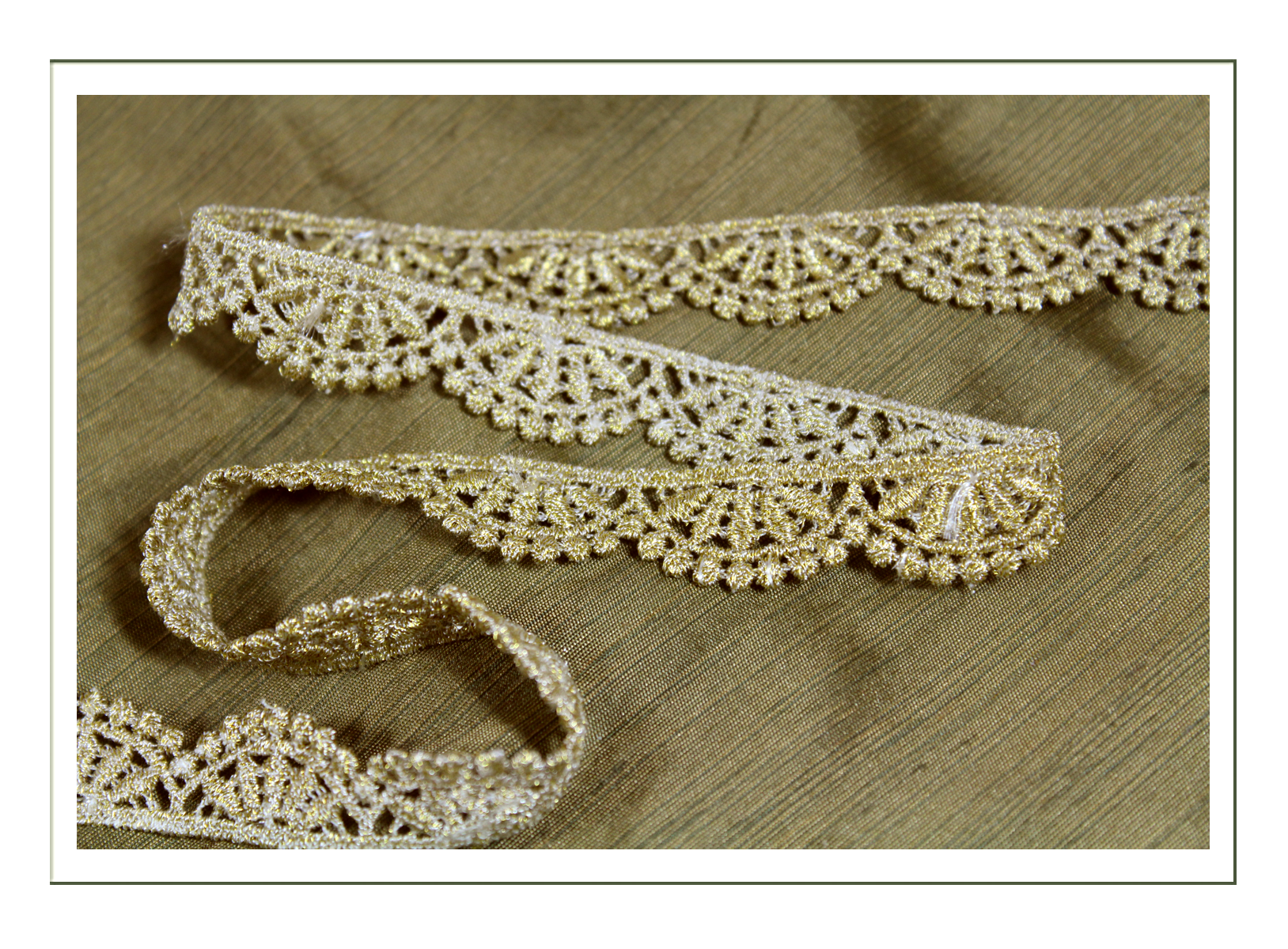
Her old corsets would be worn at night and around home, but this one for social purposes would have a fine fabric cover and interesting trim. The trim would most likely be mass produced too.
Most under under
This would be a combination. While there were camisoles with drawers, and French drawers and many of the lacy things and frou frou that was coming into fashion, Jacinta’s Sarah character would have a very basic and functional garment that could be worn in many situations. If we chose a bodice with lace revers or full front, it will be necessary to keep a flat front profile; especially under the tight corset.
In this situation, the combination is only as a sweat barrier and to reduce rubbing; not a fashionable item at all. She might have some simple trim and ribbon which are necessary for adjusting sleeves and necklines, and she might have the kind of shoulders that can drop for evening wear, but it will be very plain and basic compared to what was coming in the next decade.
Since the objective silhouette of 1884 is a flat front with large bustled rear end, and that flat front extending way down to the hips, it is necessary to have the flattest type of undergarment in the front, with fullness in the back. The split drawer or split combination was still in most common use, and these were VERY inexpensive, mass produced, and inexpensive. A woman would buy her general size and then invite her sister to come to fit it with darts to her.
It would be of a basic thin and lightweight 100% cotton and most likely white. This is a summer ensemble we are making. White was the most popular and easy to obtain.
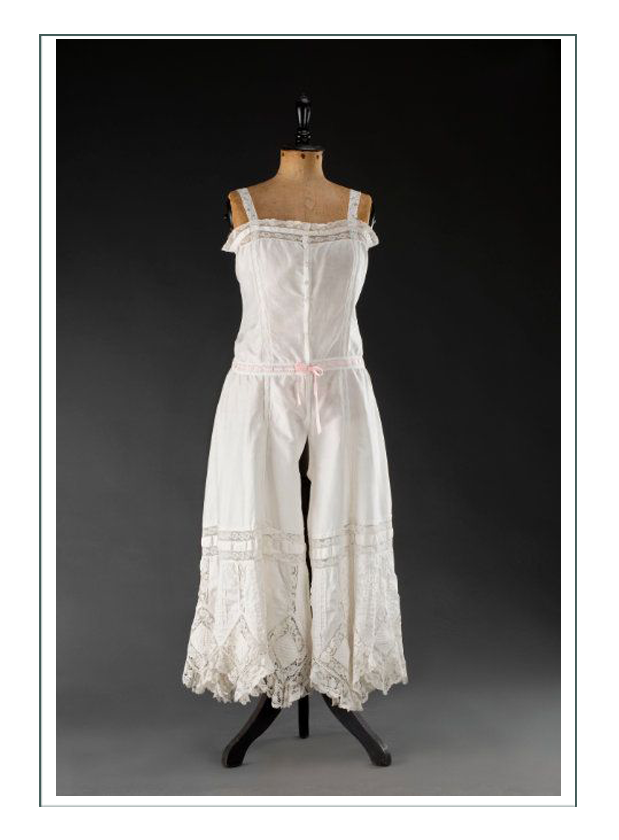
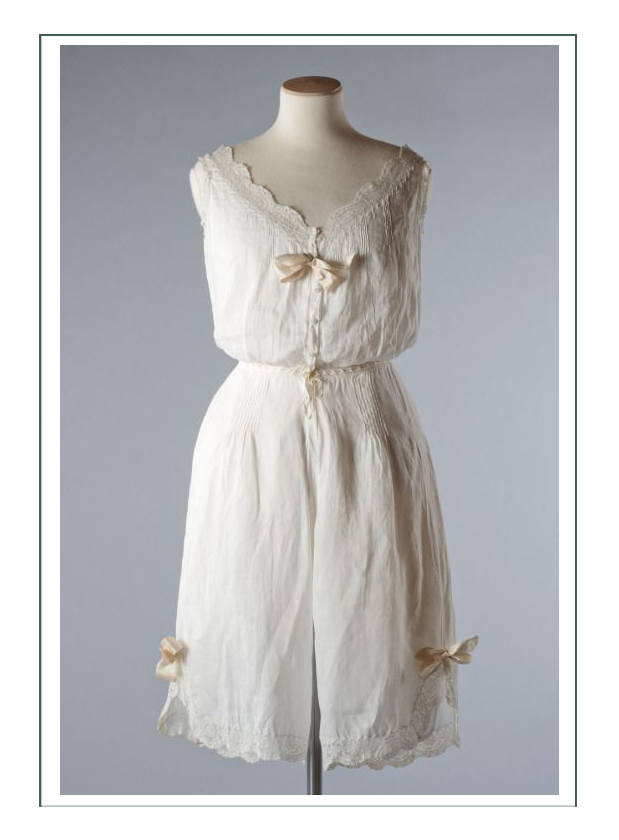
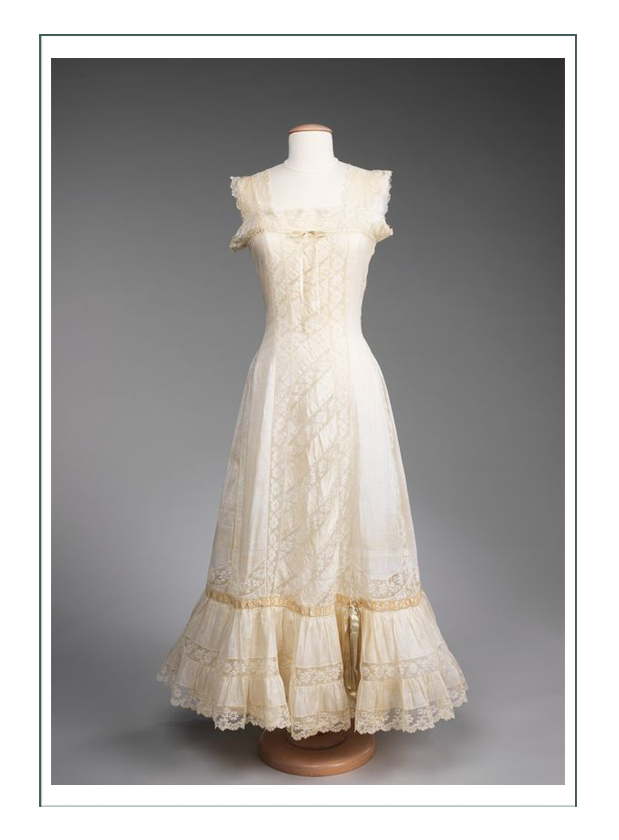
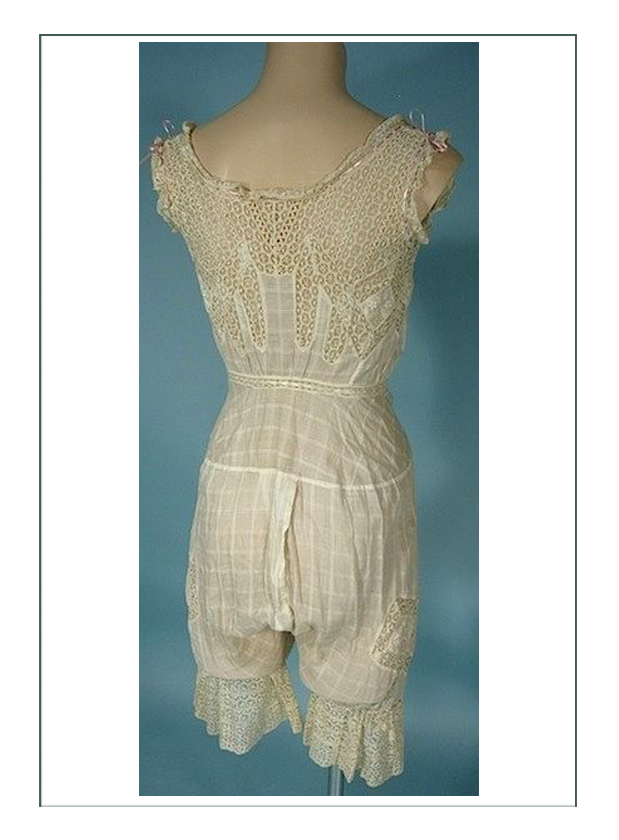
While doctors at the time wanted wool next to the skin, that would only work with a camisole/drawers arrangement. Since wool was only applied to the lower body in swimwear, it would not have been likely a combination of this time was made of wool, although it could have been. Cotton is the most logical, since US production was back by this 20 years after the Civil War. 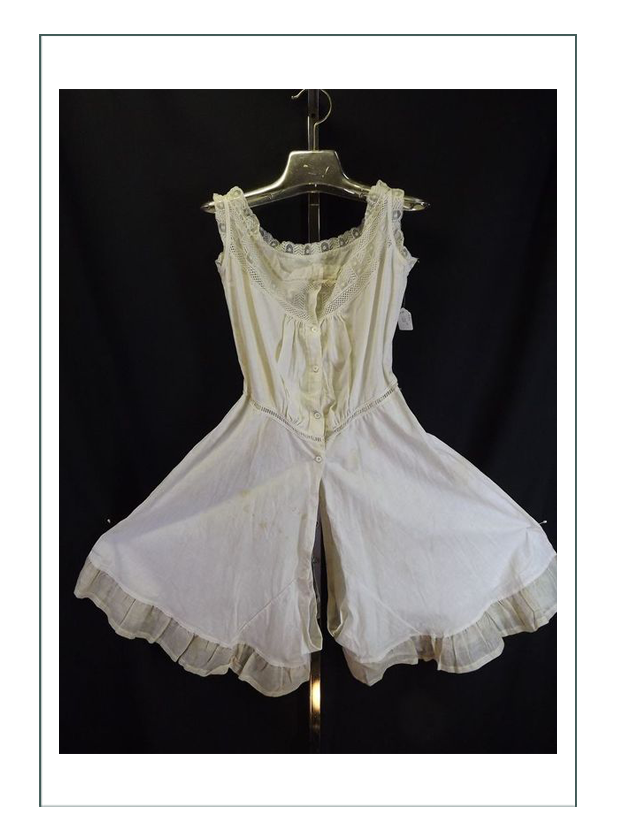 Stockings, Boots, and Garters
Stockings, Boots, and Garters
Our interpreters wear over-the-knee stockings made of either cotton or silk. They have a small amount of lycra, which allows us not to wear garters. At this point in history, women were wearing complex or simple garters made of fabric, metal, and early elastics to hold up their stockings. In a few decades there would be garters attached to the corset, but these corsets were not yet long enough for that.
Boots were really not considered stylish yet. When women entered the workforce and sports with more numbers late in the 1890’s, boots became a necessity and a fashionable item; for cycling, tennis, golf, etc. At this time they were worn for travel and walking (the only “sport” truly acceptable for all women), and riding horses. Riding horses was throughout history an acceptable activity for breaking social fashion rules.
At this time the boots would be either the previous button up with a chunky style heel, or approaching the higher and tapered heel that was coming in the Edwardian Era. The difference can be seen in the height of the heel for interpretation; it should be towards 1″ for 1884. They must be of natural and real fabrics – leather being most common, but there were wool, felt, and suede slippers and boots readily available to women.
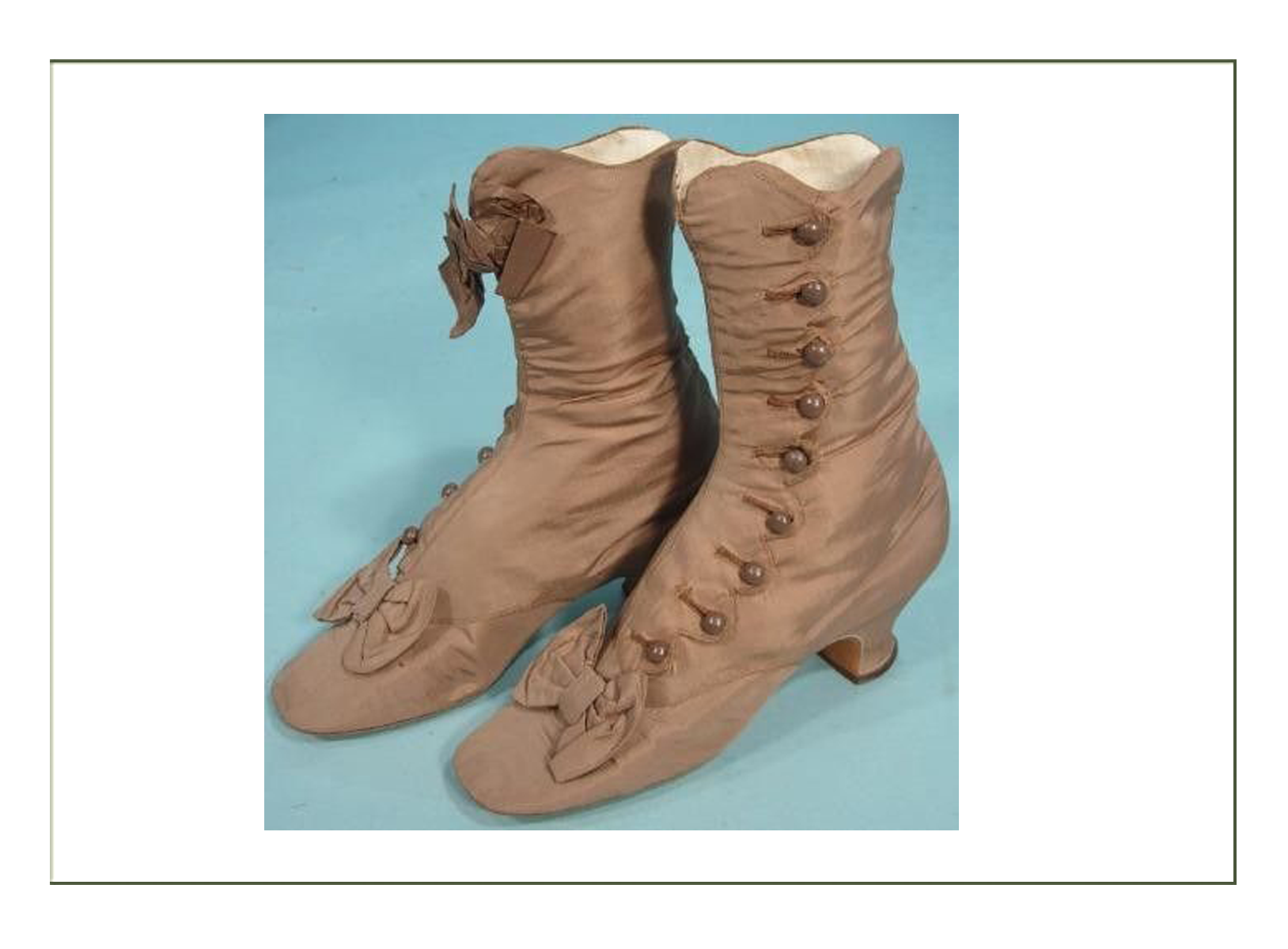
Footwear was one thing that could be locally purchased in a western town, as leather makers branched out into boot making. The boots made by a local saddlemaker would therefore probably not be the same as high fashion in New York, unless it was a special order. For this interpretation, any type of 19th century boot, as long as it doesn’t have a high heel would be appropriate. One could guess the character had a pair of slippers (pumps) with a bow or rosette on them for dress up, a pair of sturdy walking boots to go in public, and a pair of work boots she really wore most of the time.
Bonnets, Combs, & Accessories
There were MANY types of bonnets popular at the time, and women would always wear something on their heads. We have photos of the character in reality, and she is shown without a bonnet, a presumeably a comb, so we will too. Combs at the time were hand made of bone or pearl or wood, the same as buttons. There were metal combs too, and many were highly decorated, but most commonly a woman would have a comb that matched her hair color, and had some ornamental beads on top.
This was very typical of western and rural women, who might be wearing prairie or slat bonnets and need to be able to fit them over their heads. All women wore their hair long; it was a matter of pride. She would never been seen with it down in public; that was for her husband’s eyes only. Young women and mothers who needed to get dressed quickly, and old women with less hair, would “stick” their hair up in a comb after making a long braid and be on their way. 2 pronged combs with very long tines were used for very long and heavy tresses. Small, multiple pricked combs were for thinning or shorter hair, which is why the metal combs, which tended to be smaller and multiple tined, were not as popular for daily use.
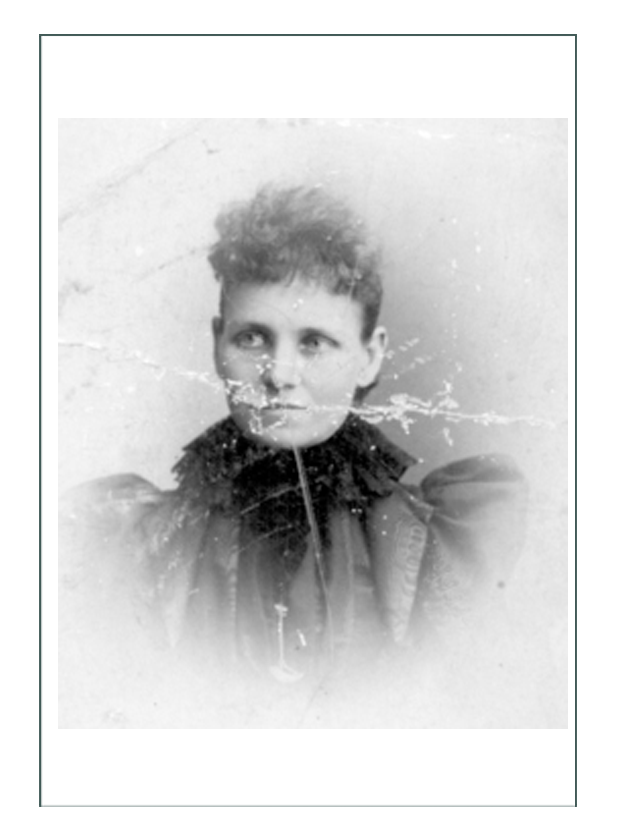
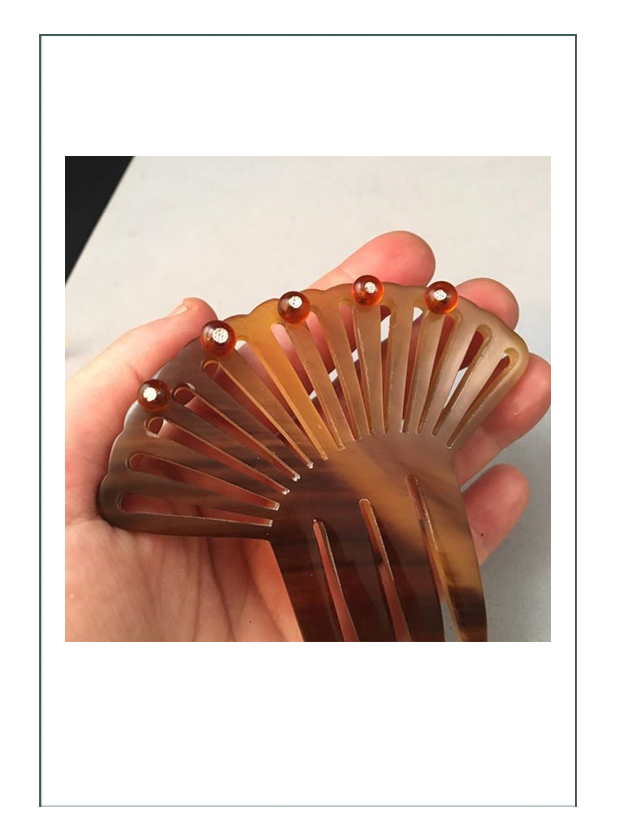
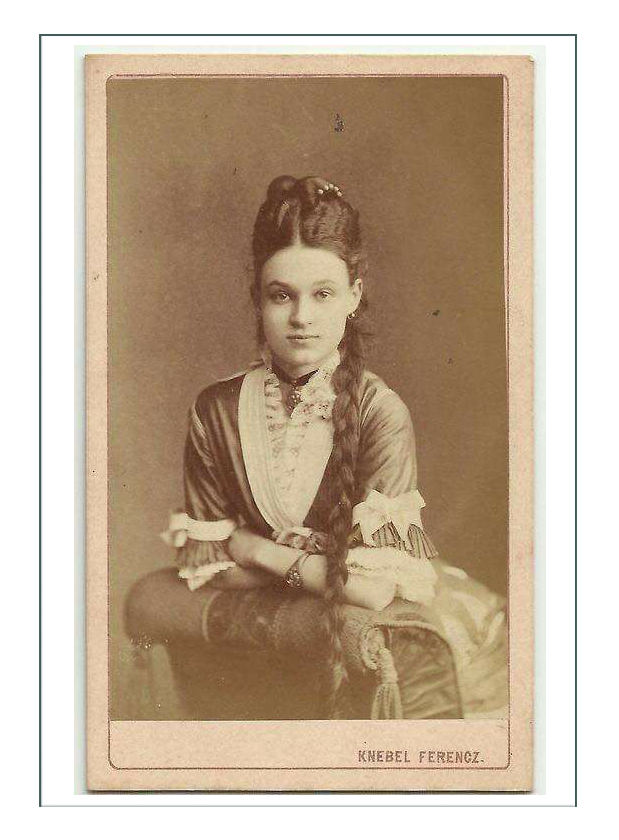
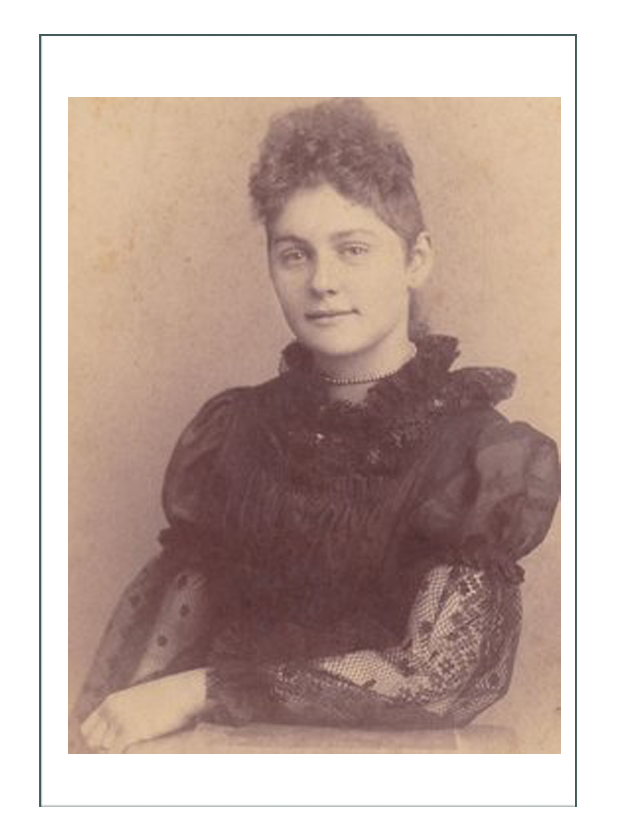
While there are many bonnets for in town use, one continues to dominate in our research. It was a style introduced by immigrant Dutch women in the U.S., and was called “stovepipe” or “Flower Pot”. Mostly found in straw for summer, or a lightly covered silk or wool, they almost always were of a brown or natural color and were decorated with a simple band, feathers, some sort of rosette or flower or medallion, and that was it. The band would coordinate with the ensemble, but not always.
Those in Europe were quite fancy and colorful as they were covered in fabrics. Master painters depicted these hats, as they were so noticeable and distinctive from other bonnets of the time because of their height. One presumes the style was popularized because they were similar to European nobility’s riding hats, and horse racing was very popular. It might also be as women were entering the work force, or at least on the sidelines cheering on their men, they wanted a bonnet that looked more like what men were wearing, or had been wearing (as this is more indicative of men’s 1860’s hats).
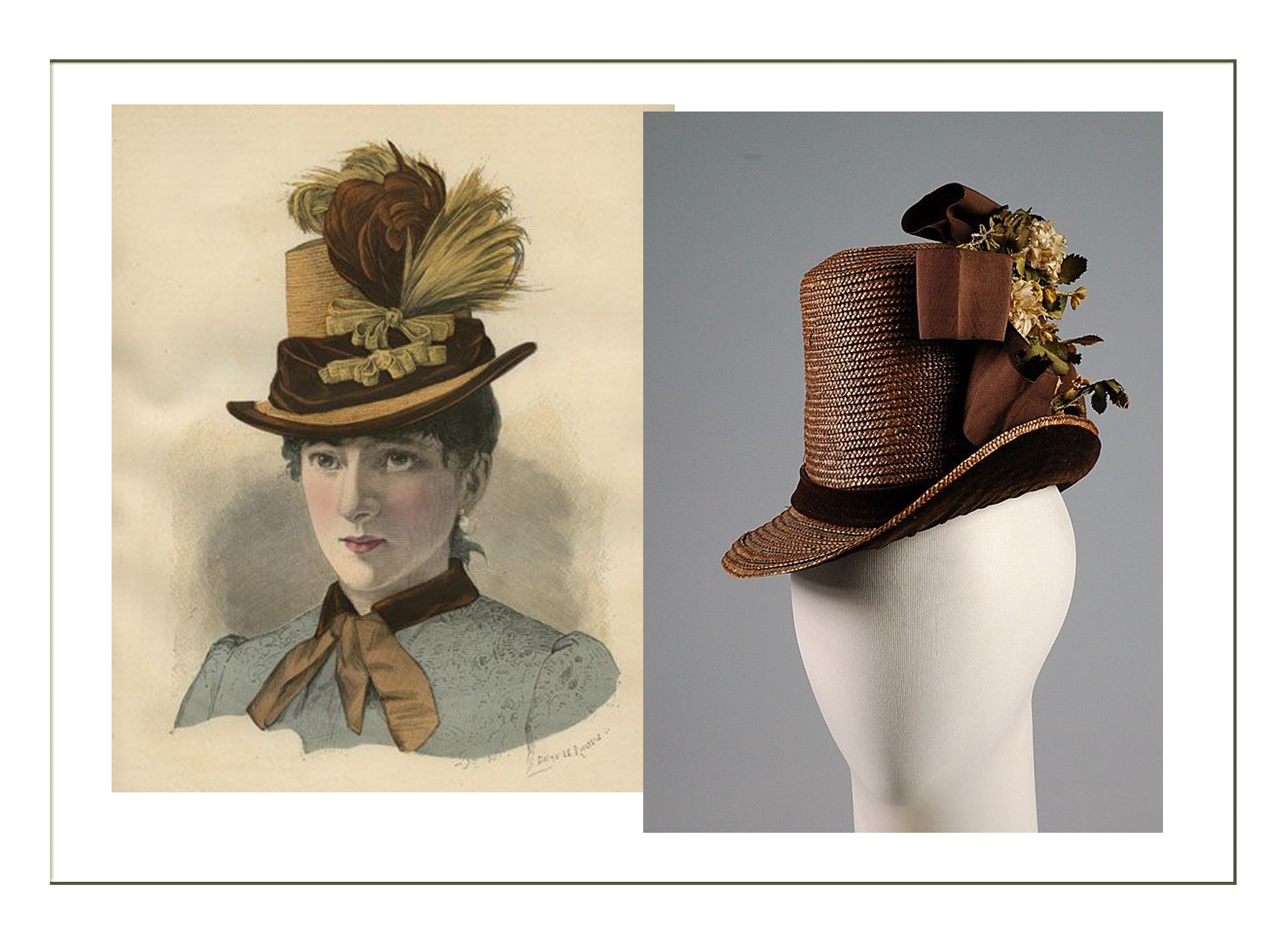
We have made an arbitrary decision to make a summer straw Flower Pot hat and decorate it with leftover trim and fabrics from the same outfit, as if the woman herself had done so, and not a milliner.
Jewelry
This is the height of the Victorian fashion ear, which means complex and detailed jewelry on neck, wrist, ears, and hanging down and attached to the bodice. There are hundreds of examples of these, and any would be acceptable except the later Art Nouveau or Art Deco styles. We have (again, arbitrarily based on the number of times we have found them in extant examples and photos of real women, plus photos of Sarah Houx) chosen to use a cameo pin at the throat with coordinating earrings. To keep the cost down, we will skip bracelets, since we are aiming to have a long sleeved or 3/4 sleeved ensemble.
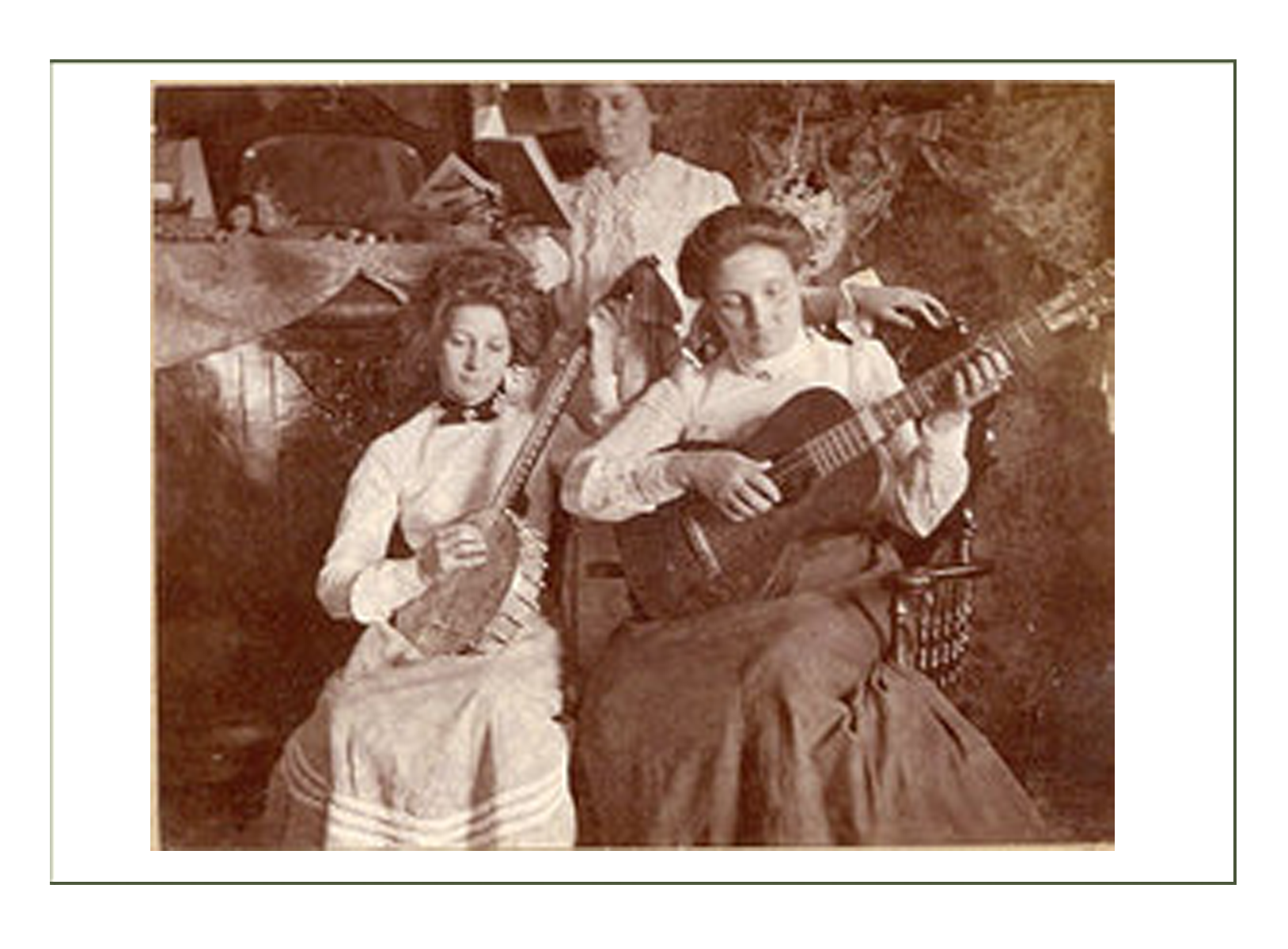
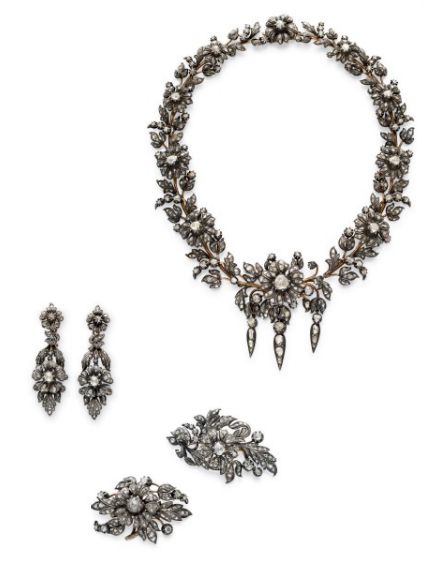
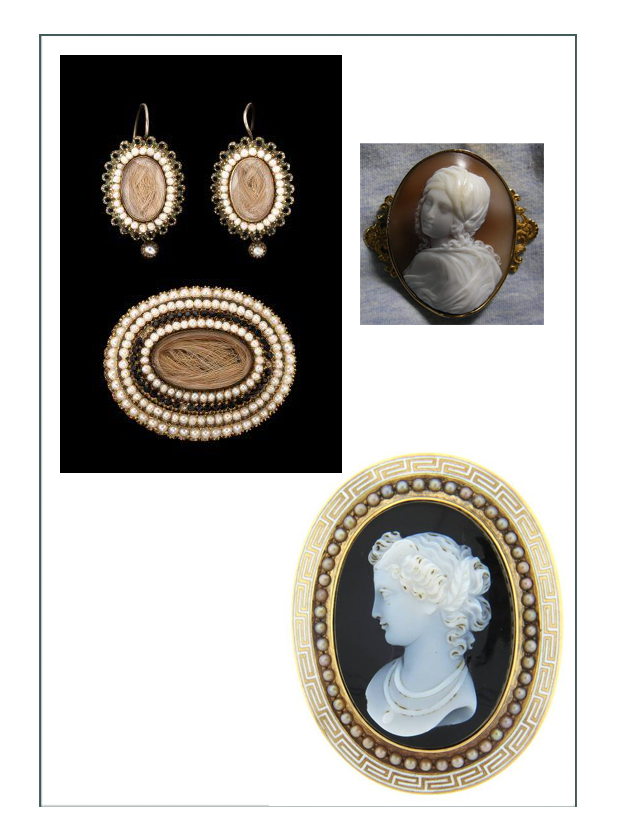
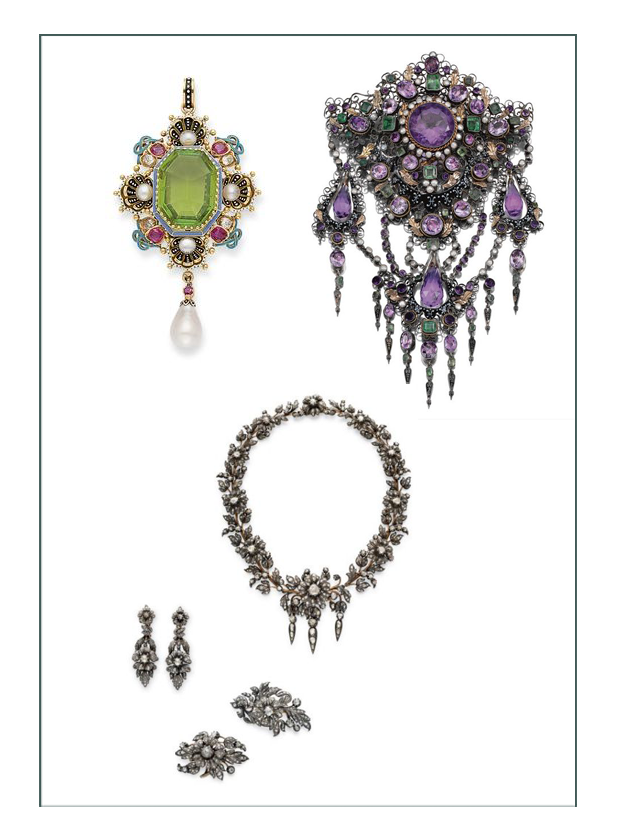
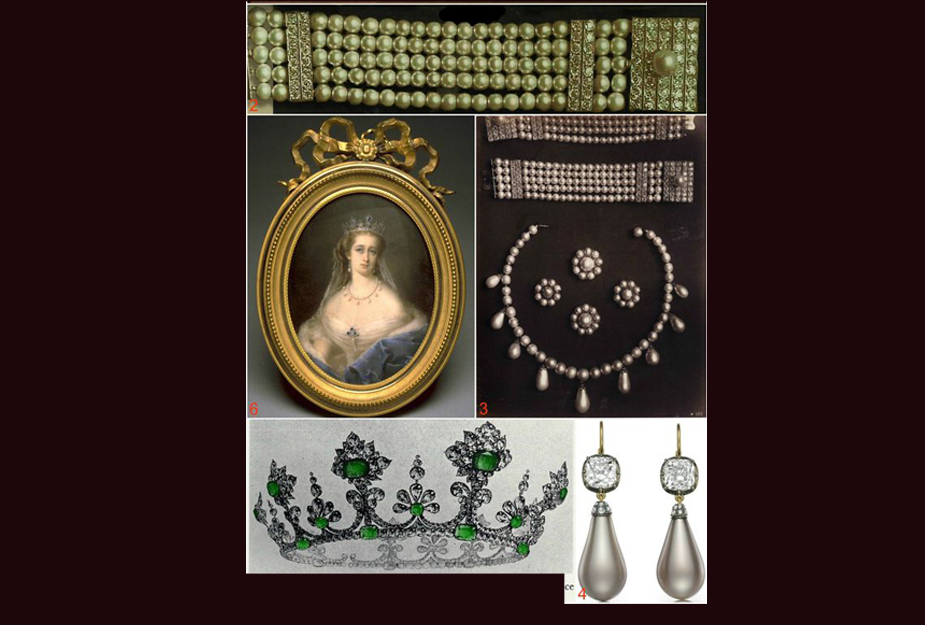
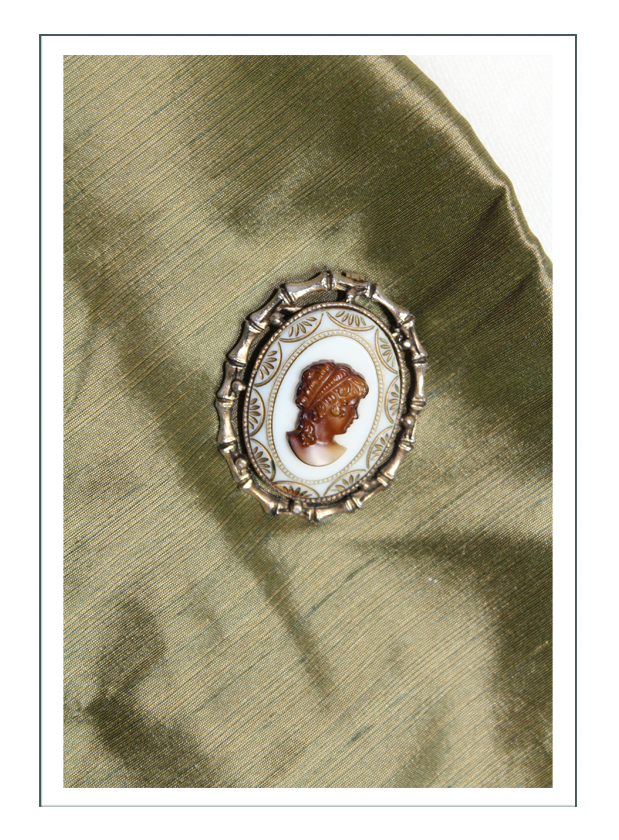
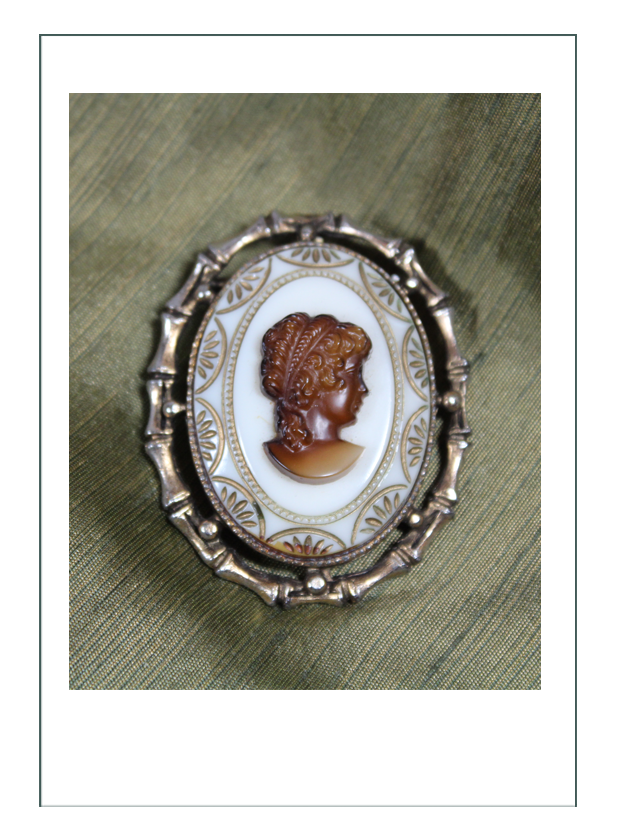
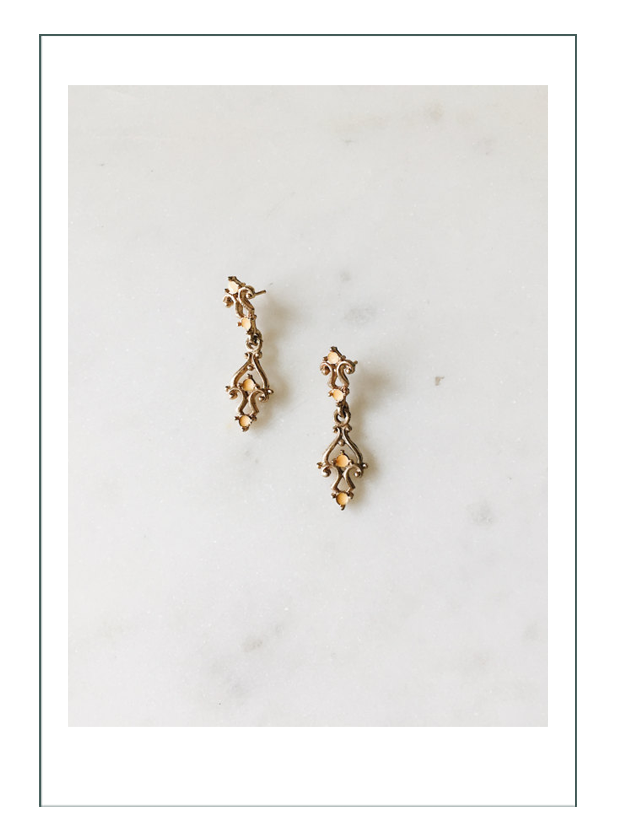
She will of course have to wear gloves, and we hope to have kid leather because it is comfortable and our modern hands can still manage tasks in that rather than cotton.
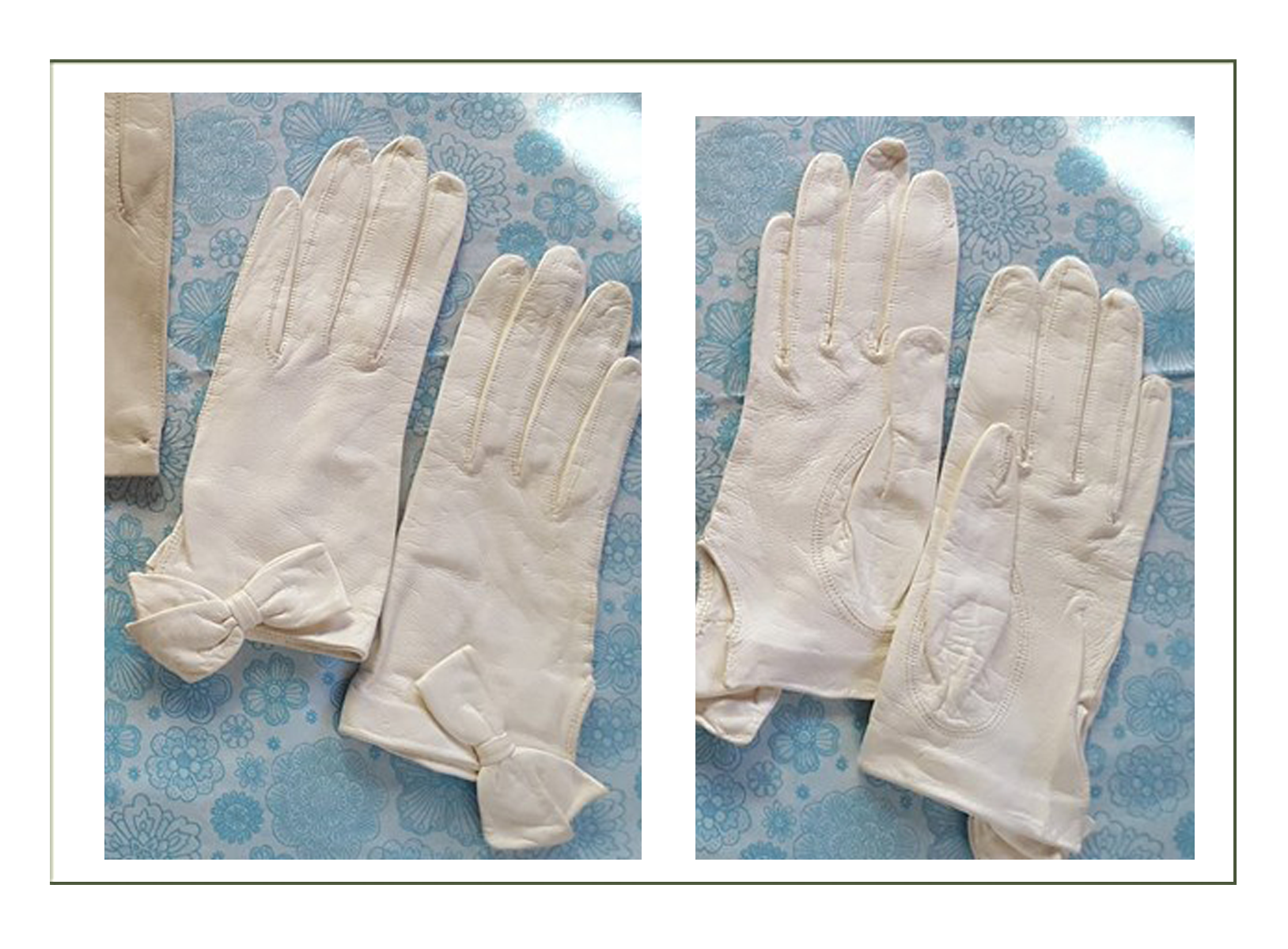
Etc.
This is a depiction of a young mother of 1884. We are hoping and dreaming to find her a pram. The problem with that is then we’ll need to find her a baby…
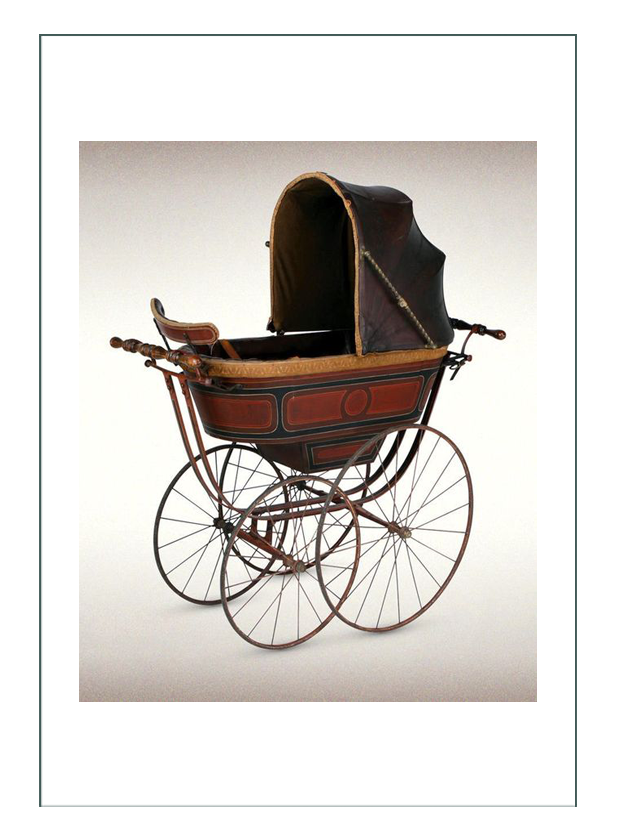
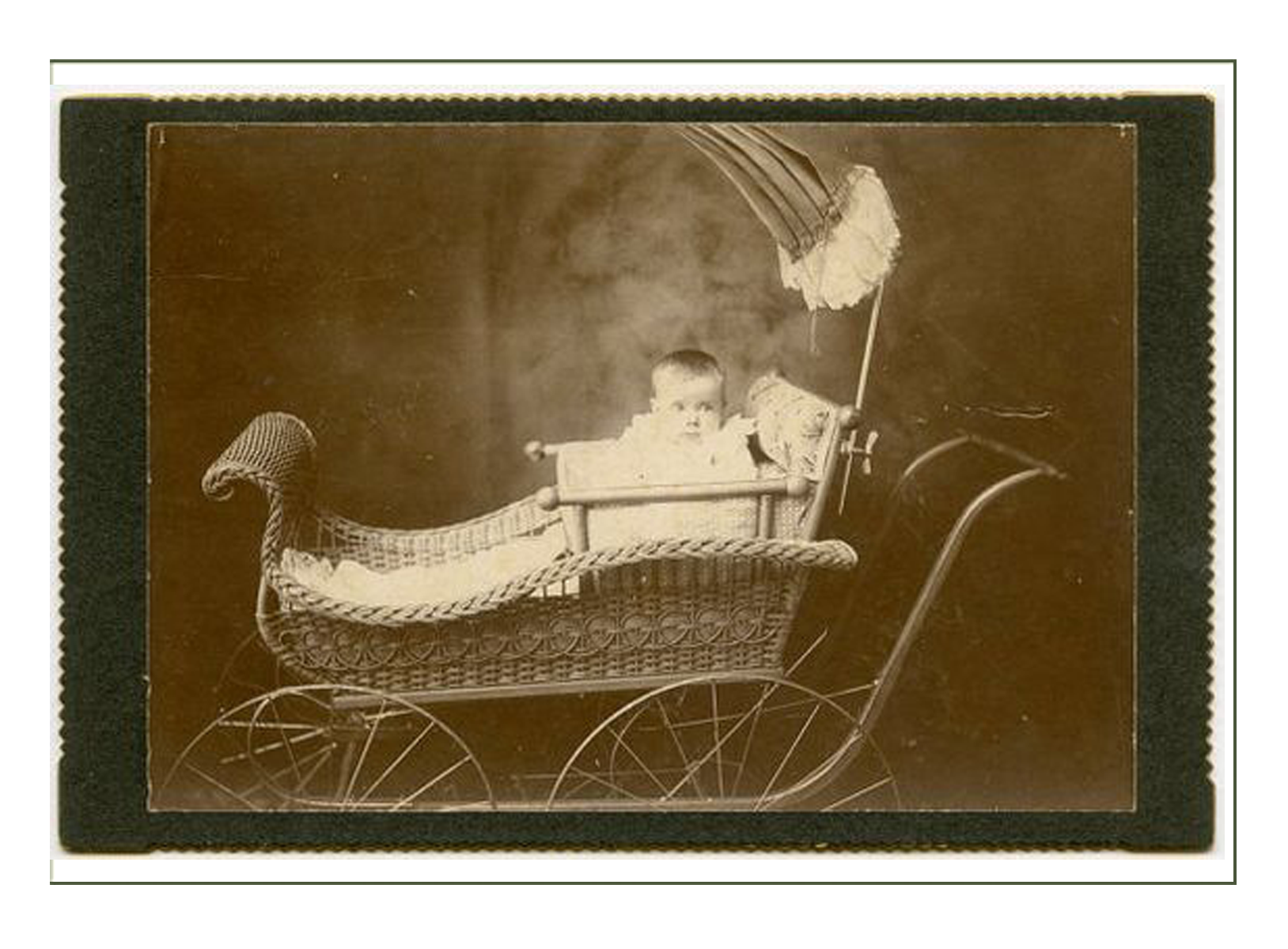
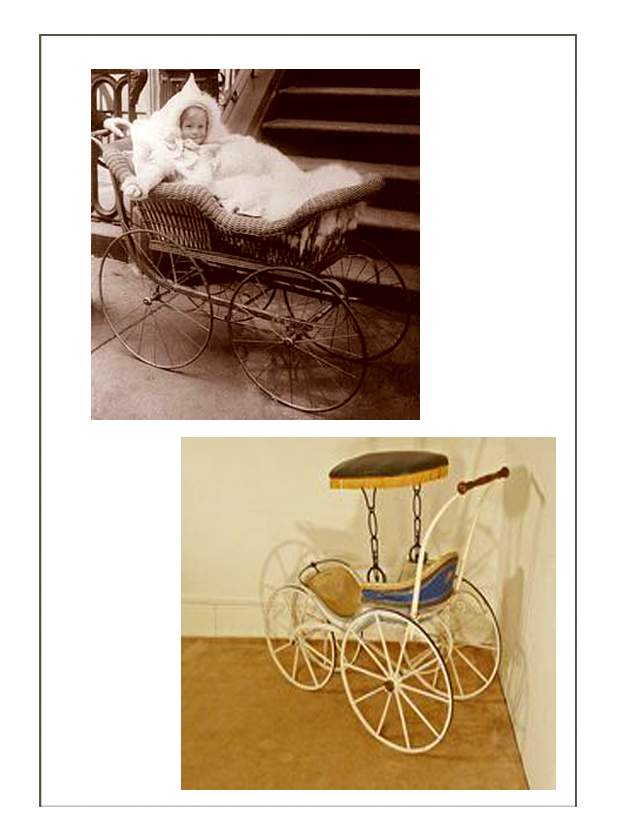 The Main Garment
The Main Garment
It would seem we are avoiding the biggest decision and research of all, but not really. 1884 was actually quite limited in silhouette and style choices. Almost every extant and real woman example you will note from the “History” sections included these features:
-
- Bodice and Skirt. 2 separate pieces
- Drape (called “Tunic”)
- over a bustle for shape
- with additional bows, flounces, ruffles for fullness
- Bodice is very fitted
- Sleeves are fitted and have a slight rise at the should but not much
- a “tailored” look suitable for stiffness and fabrics that maintain stiffness
- high contrast in color; pattern with solid and the solid is DARK
- large amounts of contrasting trim; especially on sleeves, necks, and bases (peplums)
- much lace used at neck and sleeves much like in the mid 1700’s
- it is slightly reminiscent of 18th century “rump” styles
- elaborate and rich fabrics: silks, brocades, satins, etc.
- the under lying bustle structure and corset which are very firm give the shape, not the cut of the fabric or design
- feet are covered
- petticoats peek out
- sleeves are to wrist
- neck is covered by lace if not lace and a collar
- there are numerous innovative ribbons, medallions, rosettes, and odd shapes throughout the trim and the edges like cuffs
- Kilting and pleating are very popular
- linings are rich and complementary too
Allowing for character, taste, summer depiction, status, and availability, we went looking for:
- light color green or blue
- with very dark opposing colored fabric
- bodice and skirt of contrast
- brocade with stiffness like historical; not the soft floppy satin brocades or the polyester blends
- must be 100% natural fabric
- must not look like she’s wearing a sofa
- period accurate size and repetition of the print or weave
- velveteen underskirt preferred in high contrast
- wide edged lace for neckline, sleeves, and other
- design that will feature her slimness, yet look like the original Sarah Houx
- comfortable full natural everything for summer wear
- front closure for self dressing
- minimal number of pieces to attach or adjust
- some adjustability for size changes due to corset self dressing
- complementary to her coloring and hair
- uses existing materials in stock without buying new
These favorite extant garments were found that seemed to meet the above criteria:
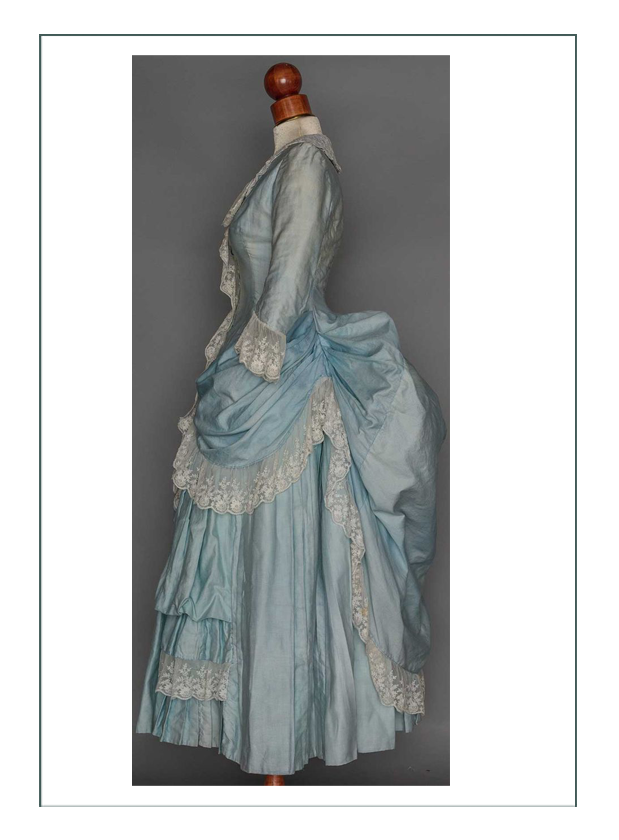
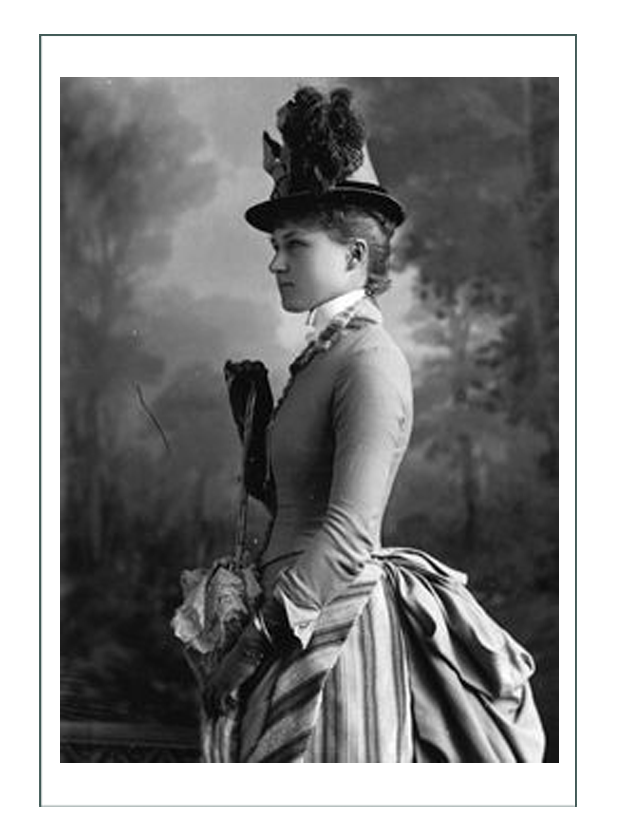
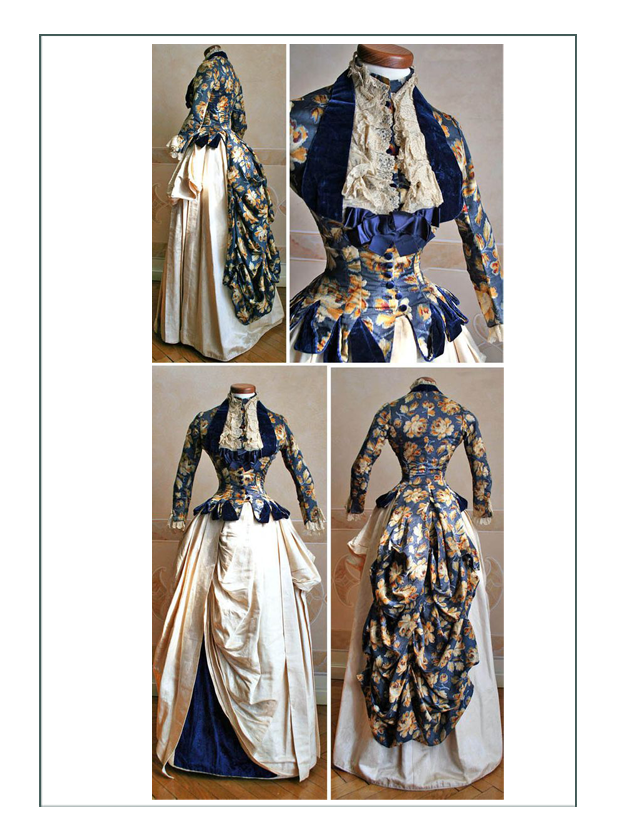
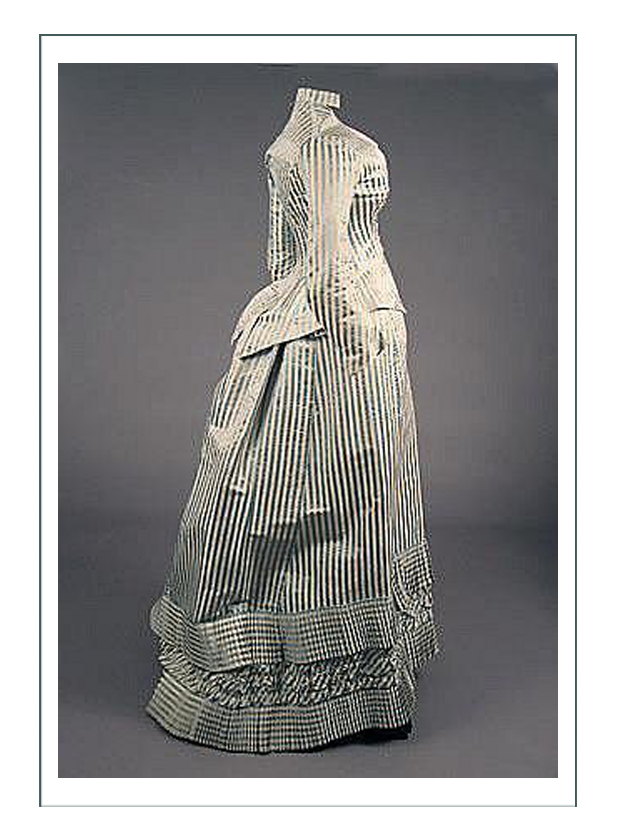
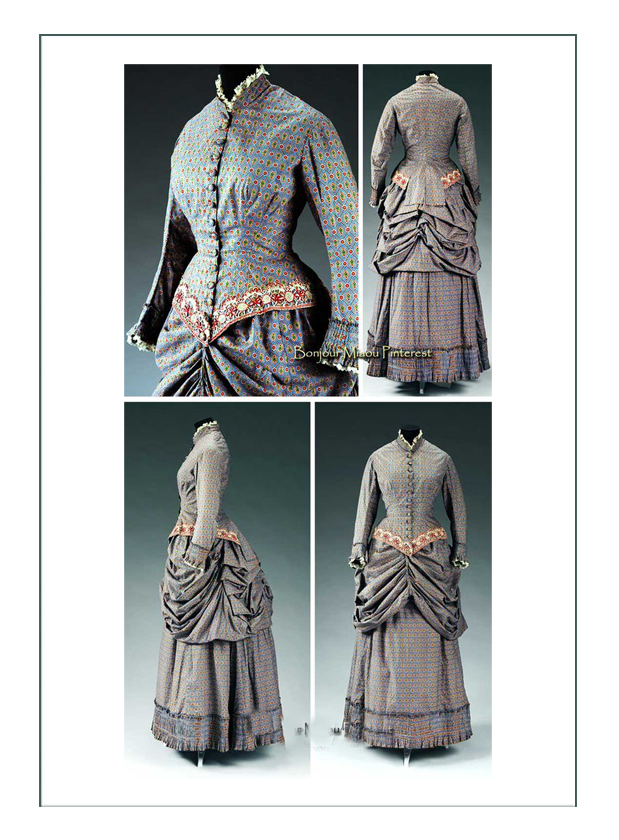
With these in mind, we went searching for patterns or instructions and found these favorites:
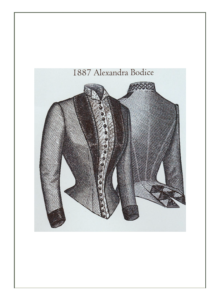
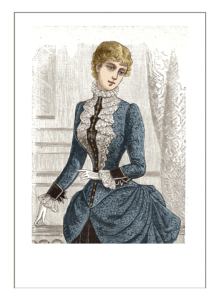
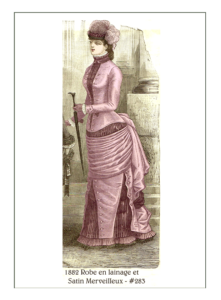
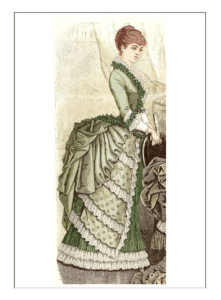
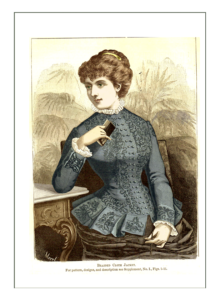
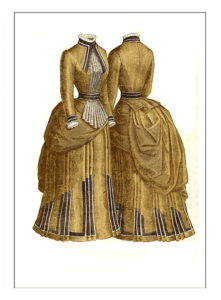
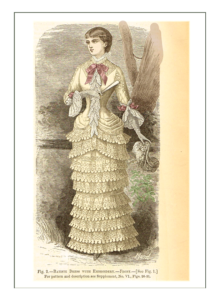
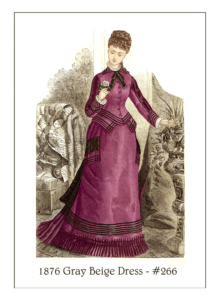
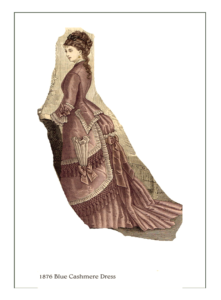
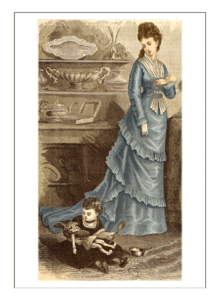
You can see the basic similarities, although 3 of them are late 1870. They can of course be made in any color, but the deciding factor was really the extremely lmited choices in natural fabric brocades and jacquards.
Fabrics
After stopping at every fabric store in the US, and ordering samples from every source we know on line, these were the ONLY brocades we could find of 100% natural fabrics, in this case silk. They were all flimsy, floppy, sheer like drape linings, and had metallic shine. It was a very frustrating search.
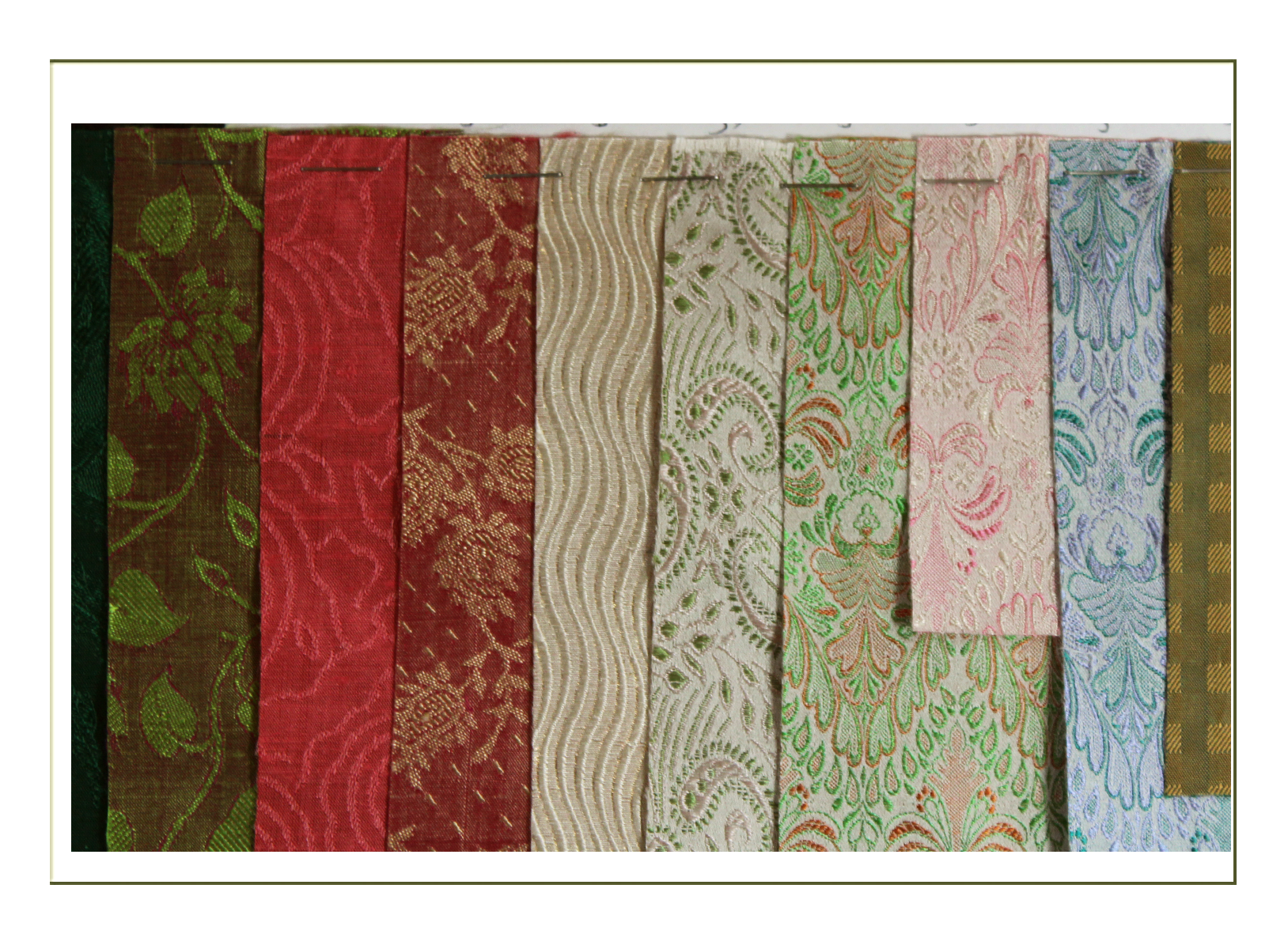
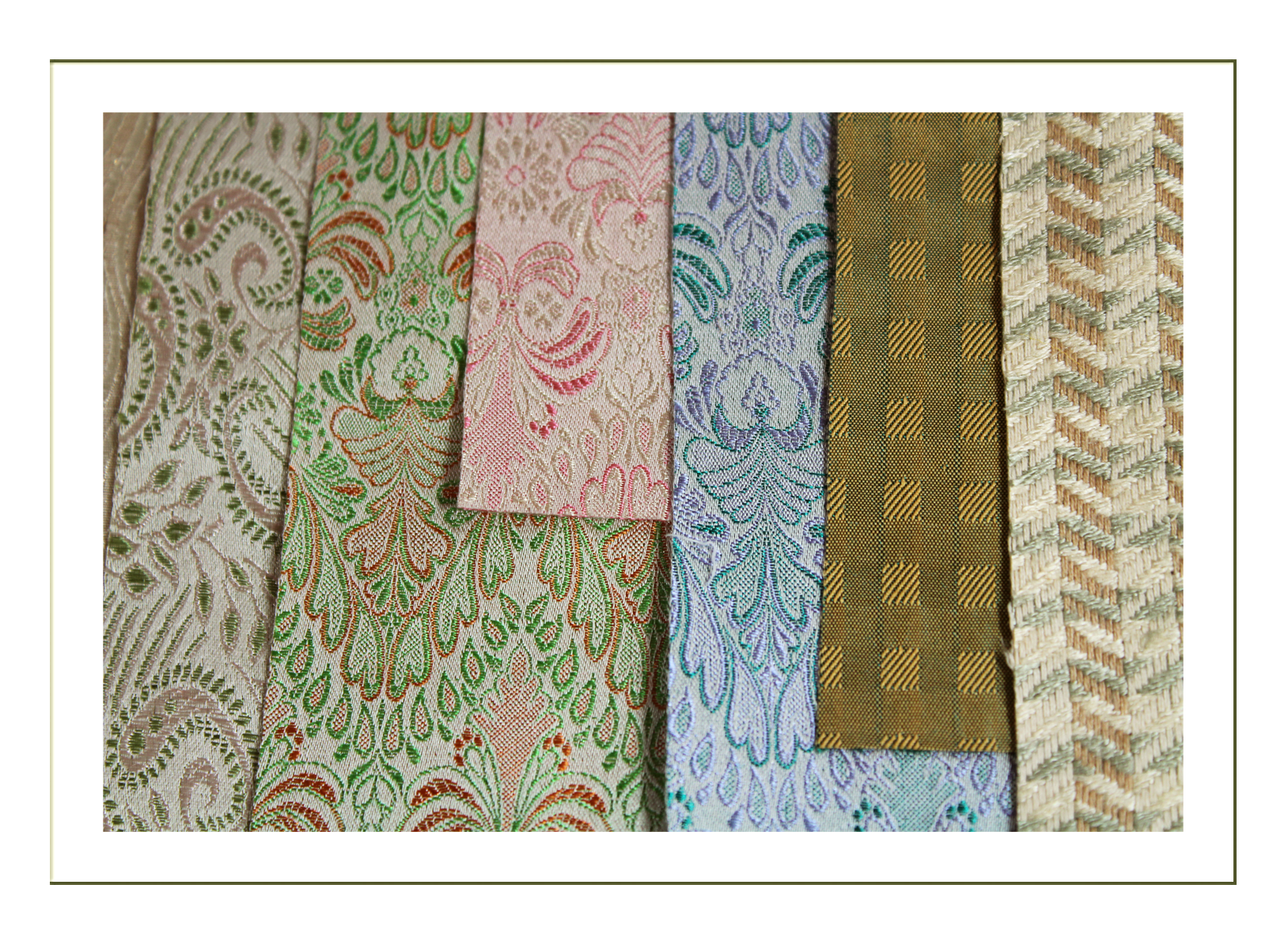
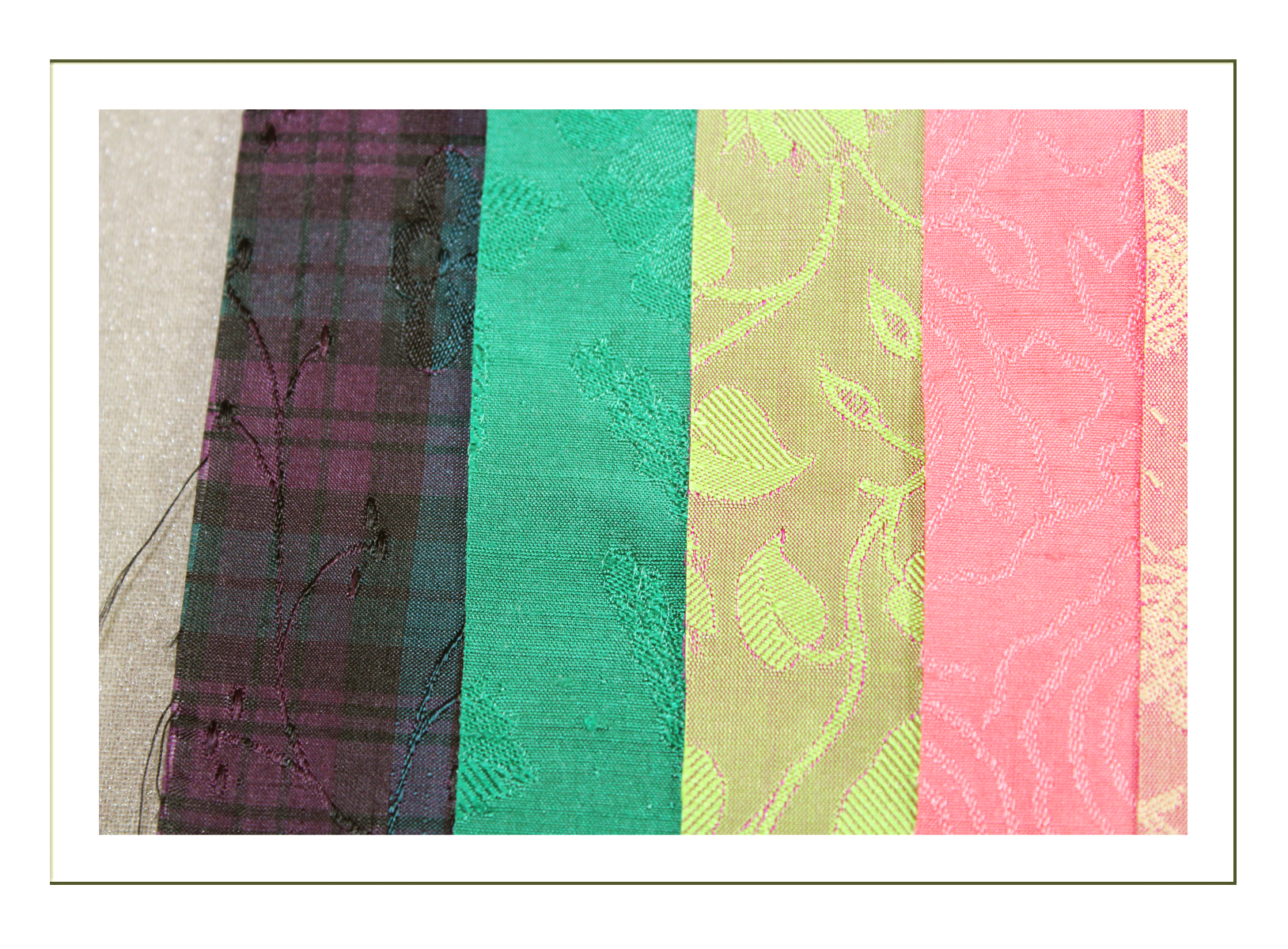
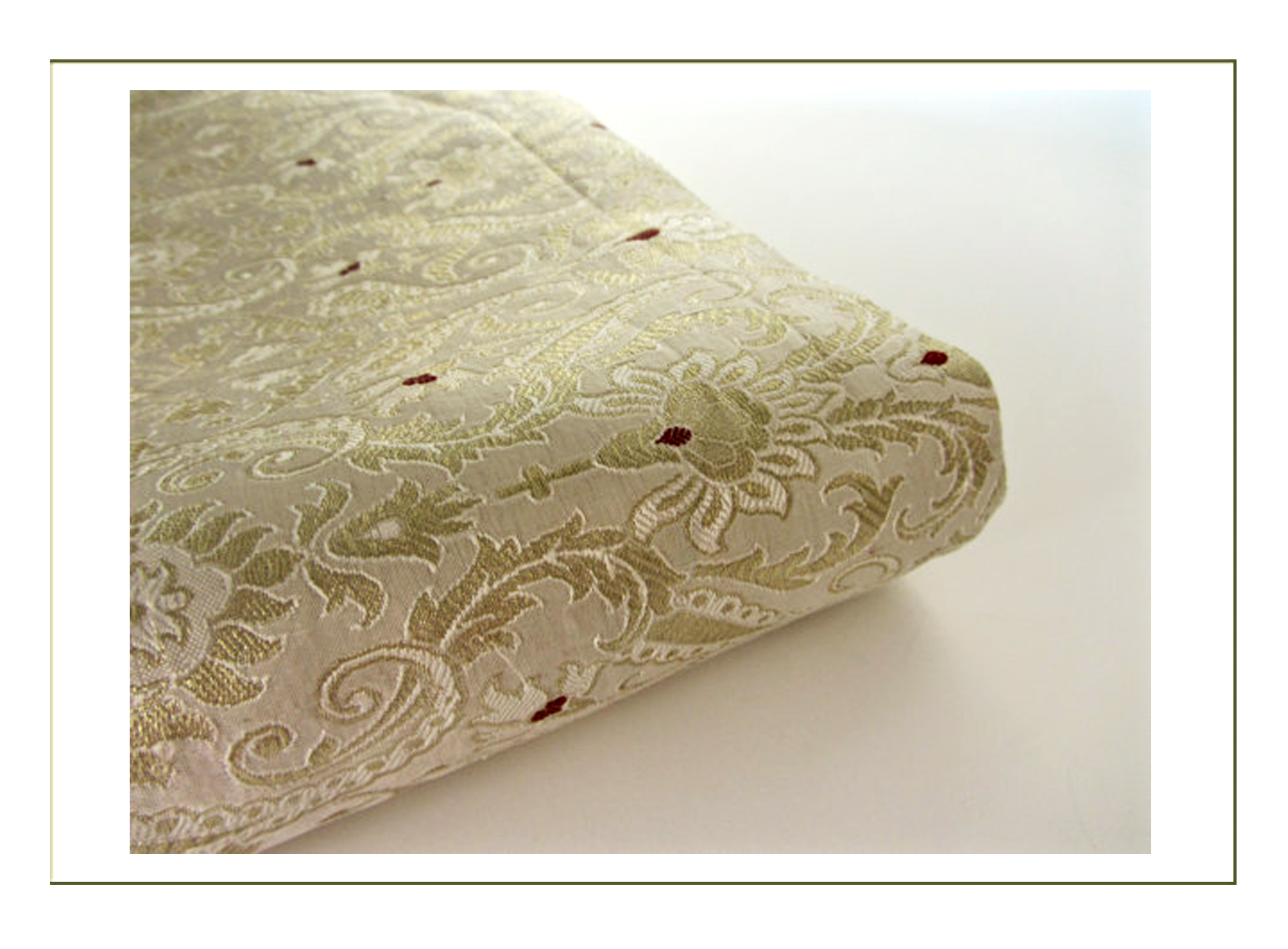
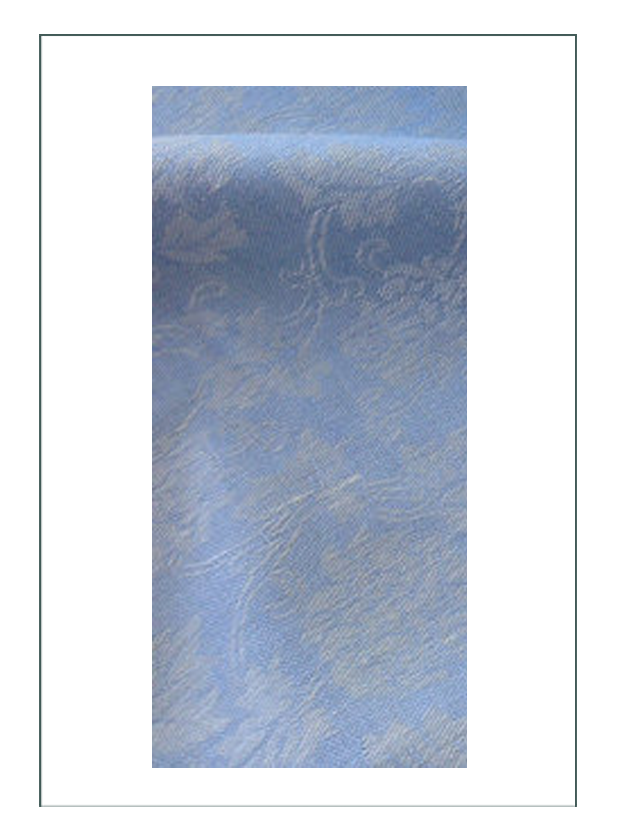
We considered cotton print, but it wouldn’t have the body we needed for such a structured bodice and drape. The heavier silks were lovely, but had metallic sheen that just wouldn’t do, or looked like window curtains: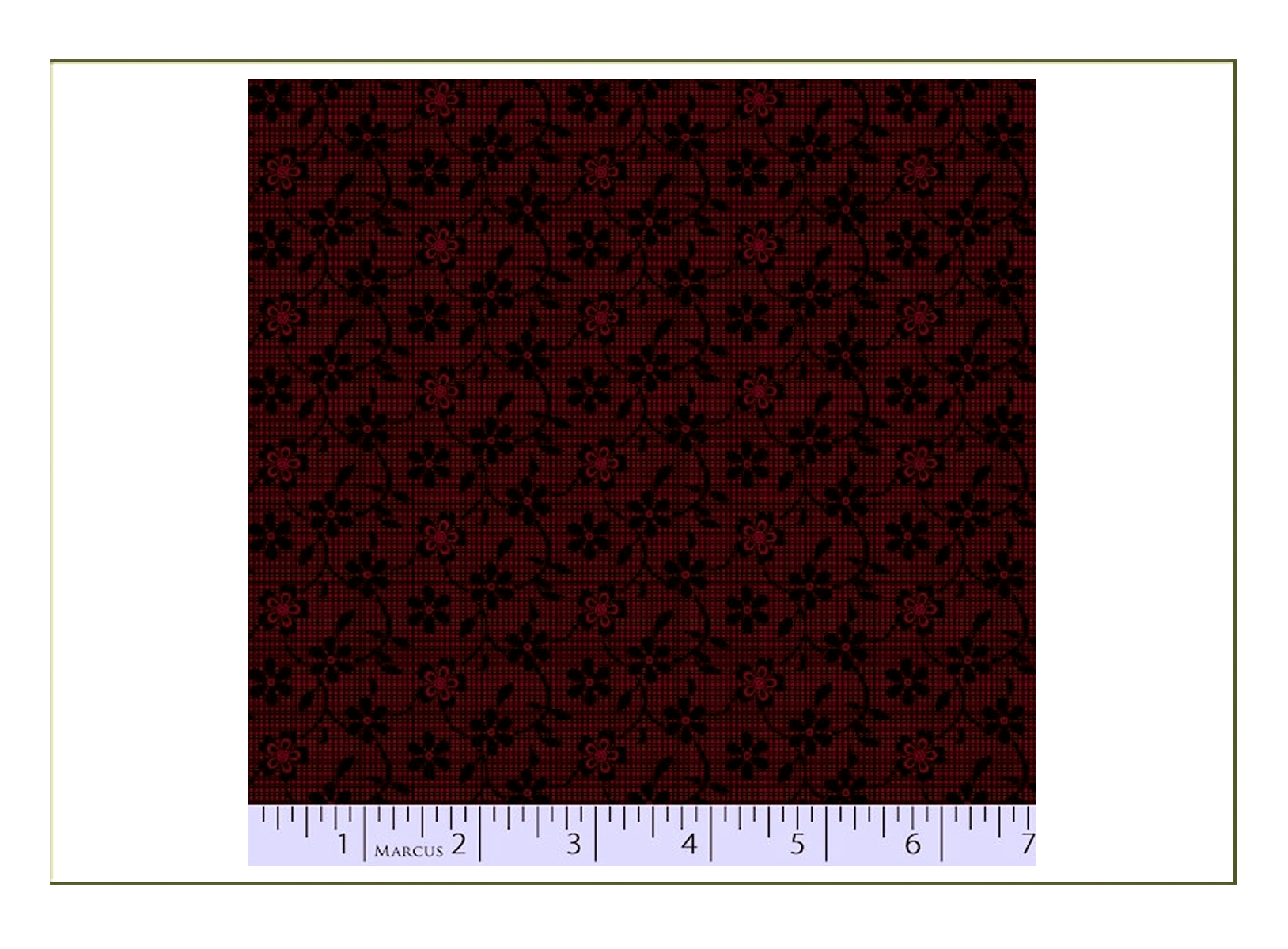
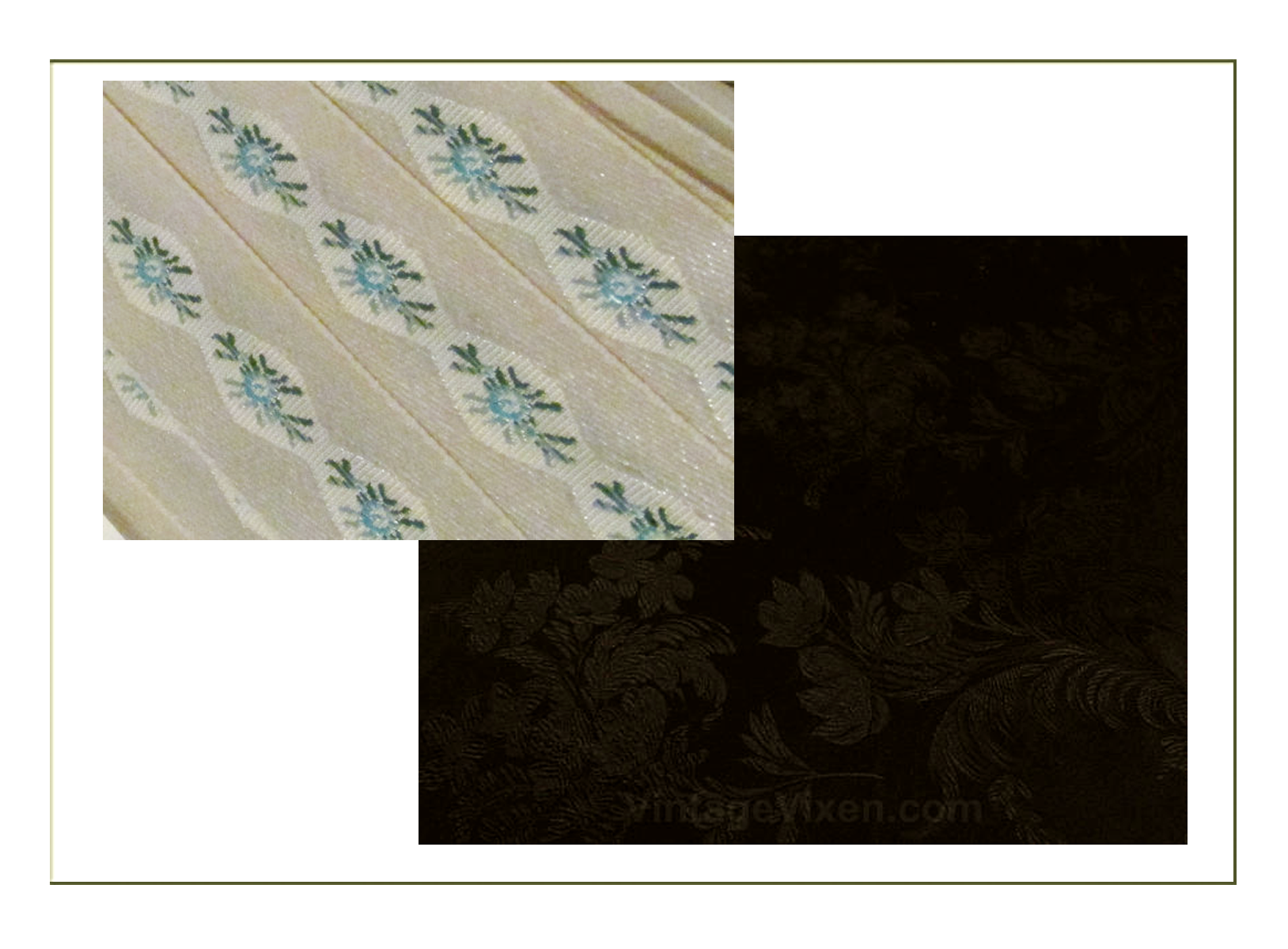 And the Winner is…!
And the Winner is…!
At last we happened upon a linen supplier in Korea with a 45″ wide suit weight brocade (as in WOVEN) linen. From a similar source, we found 14″ edging lace; had to make a sacrifice for nylon netting, but it is very sparse between good solid 100% cotton embroiderie which will keep a nice neckline shape. We couldn’t resist the matching mother of pearl blue buttons for the front of the bodice, and the broiderie for the undergarments. We might switch and use the broderie on the neckline if the cotton lace is not stiff enough to hold the desired shape.
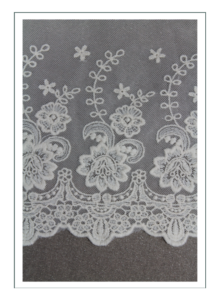
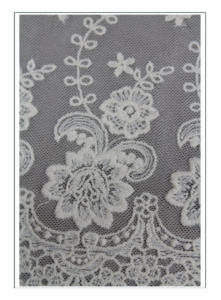
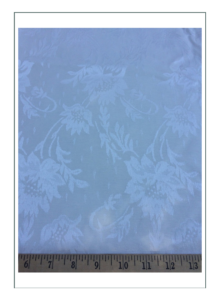
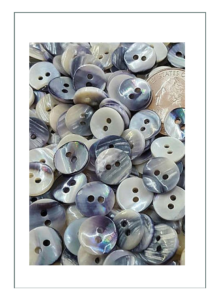
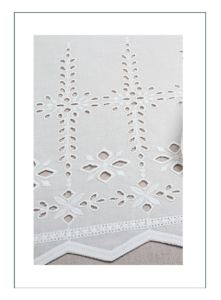
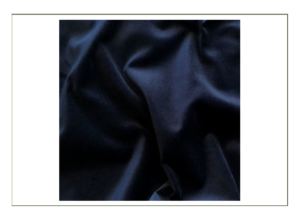
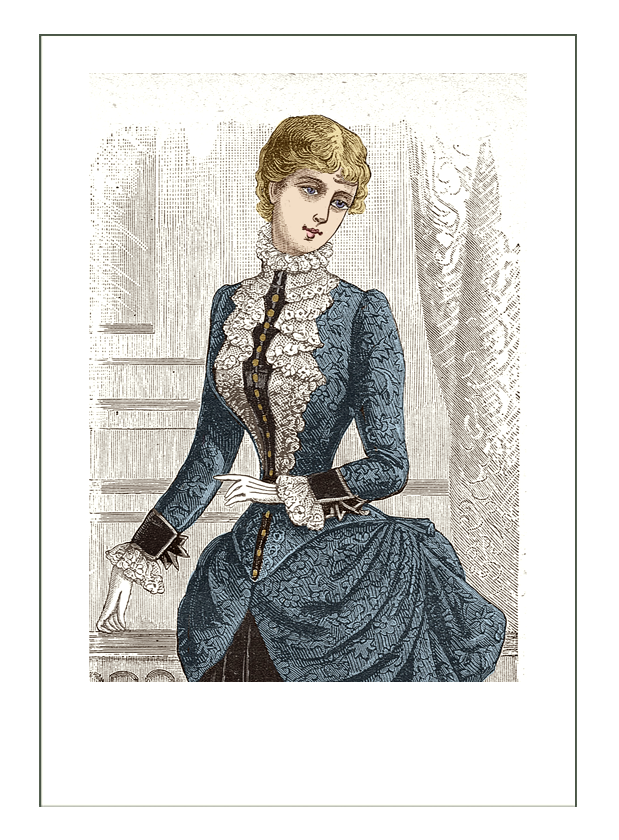
Click here to go to Jacinta’s 1884 Historical Context page
